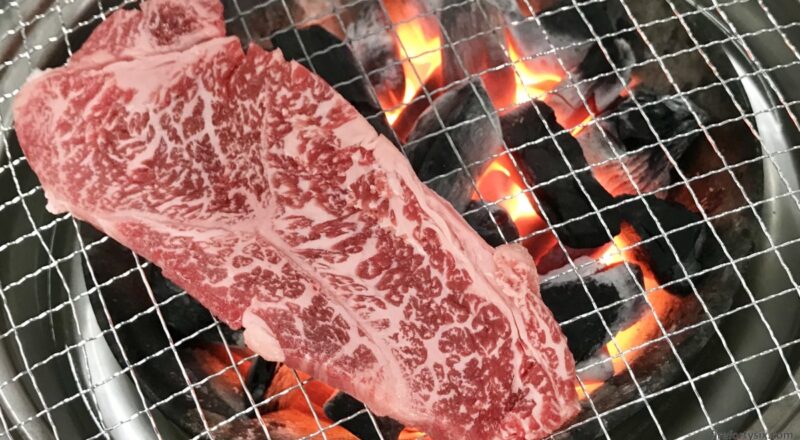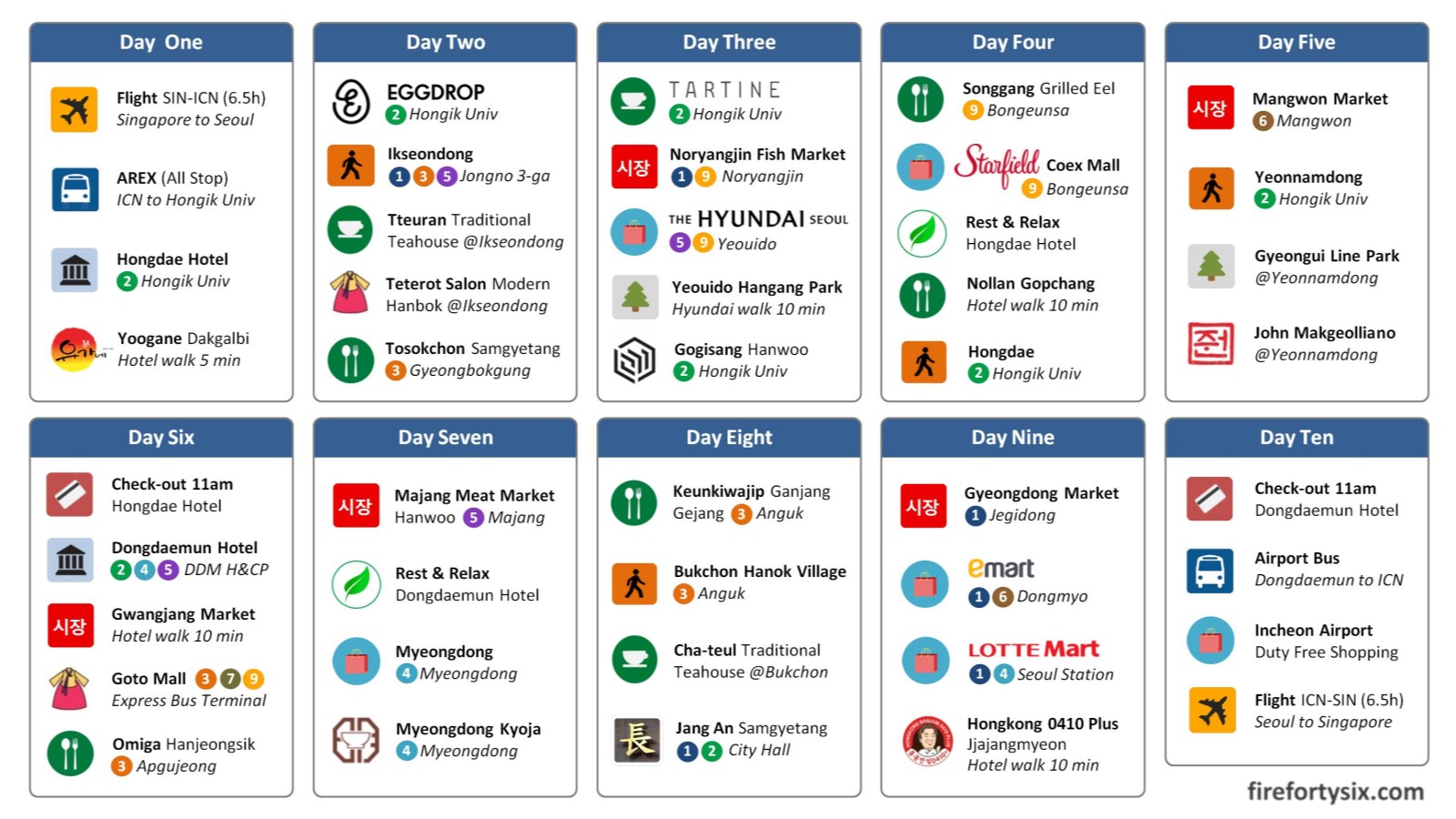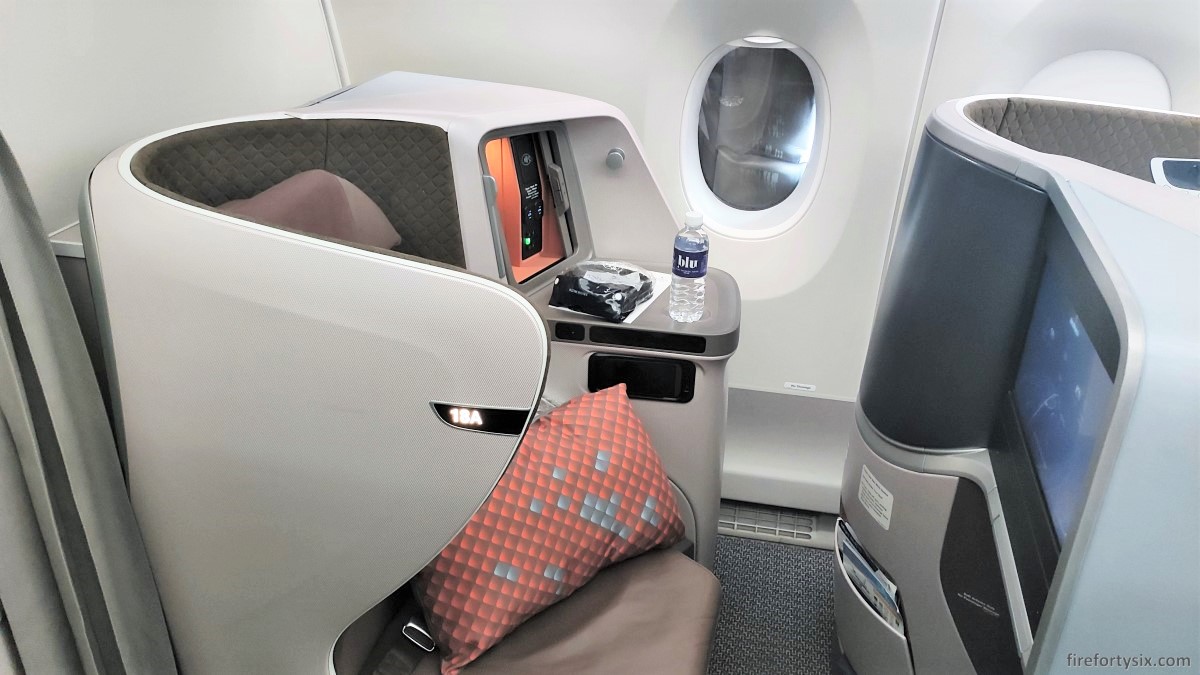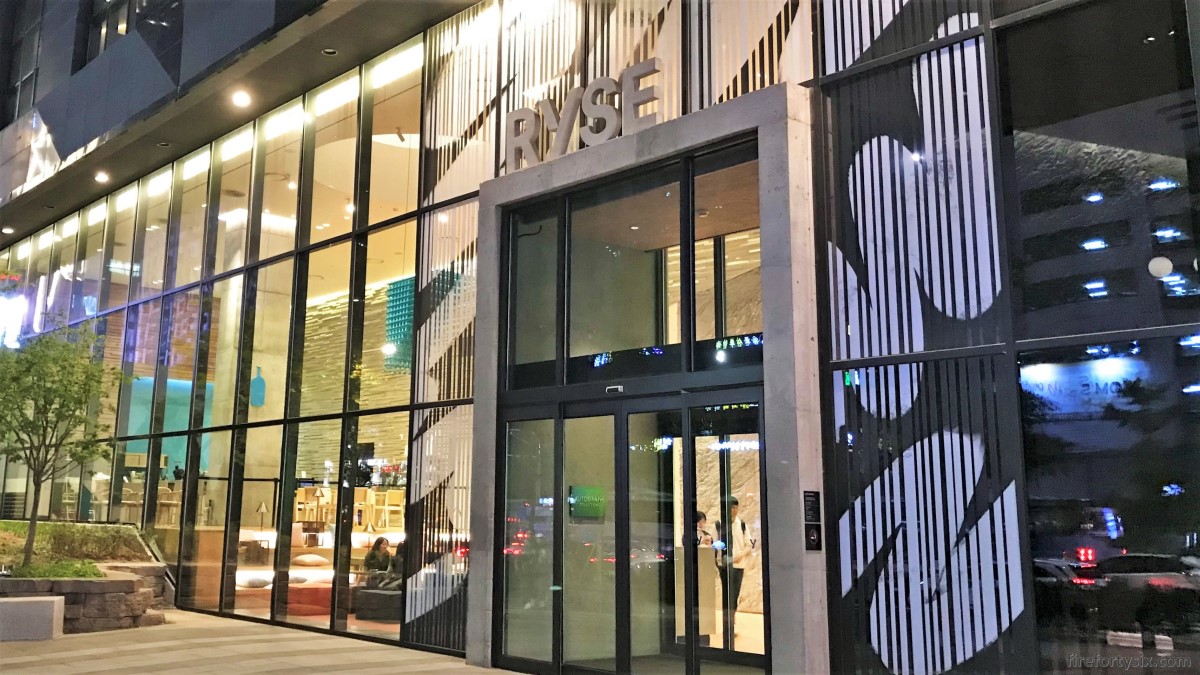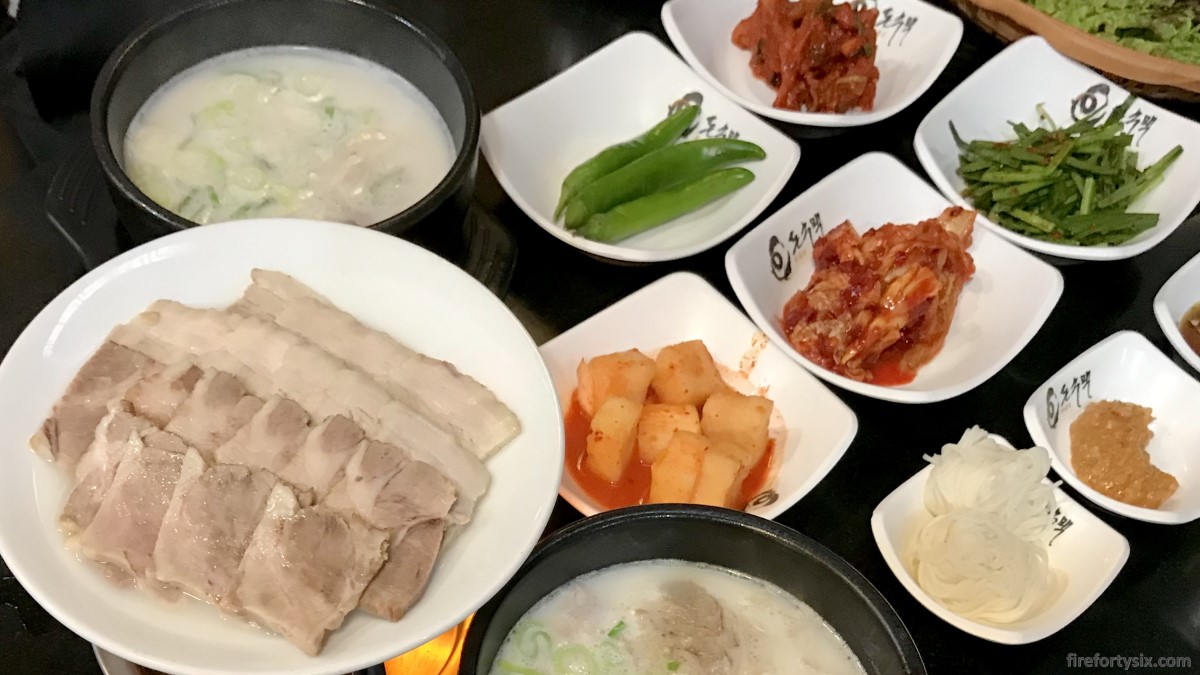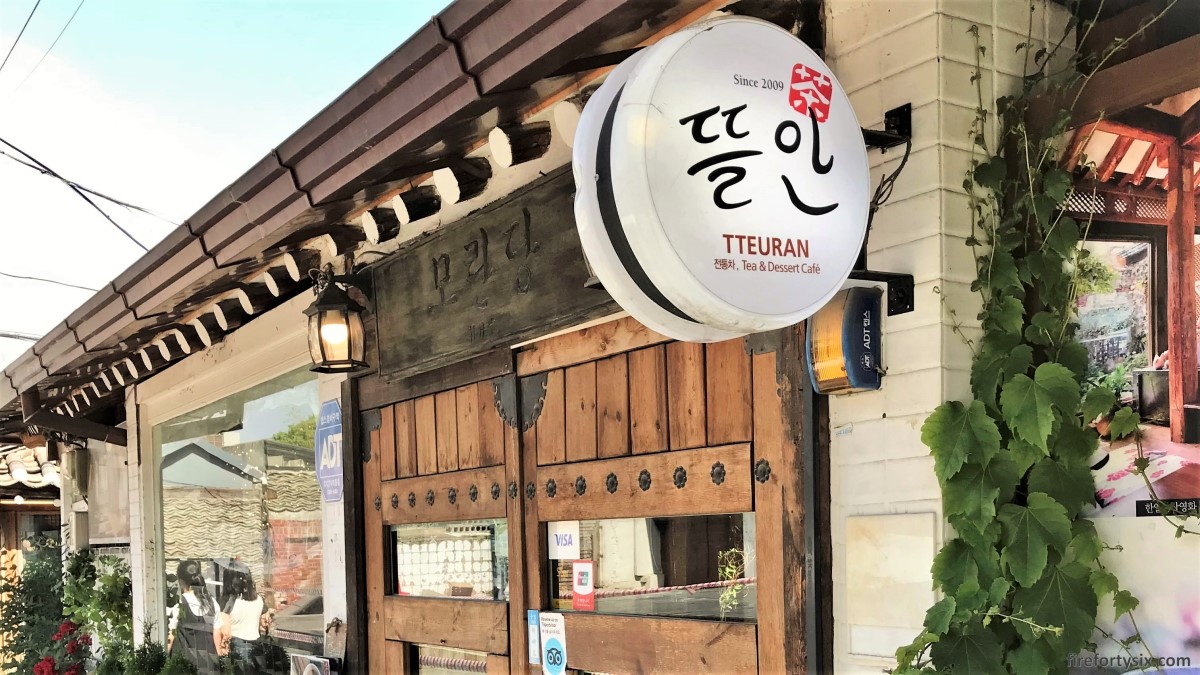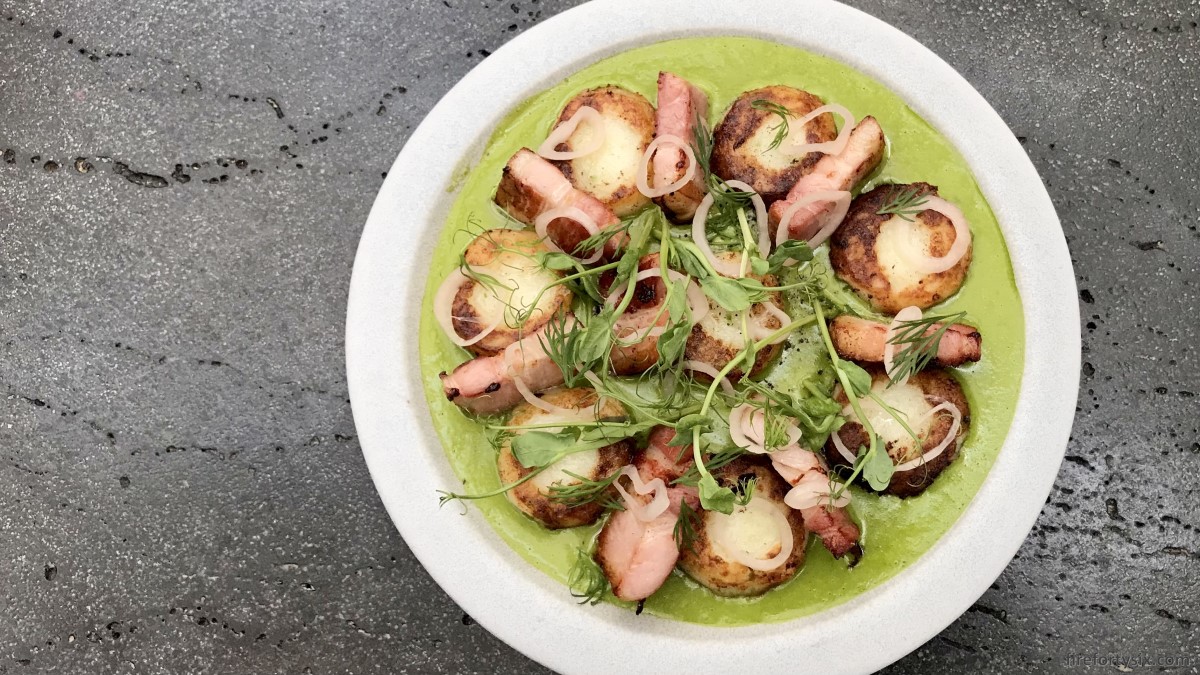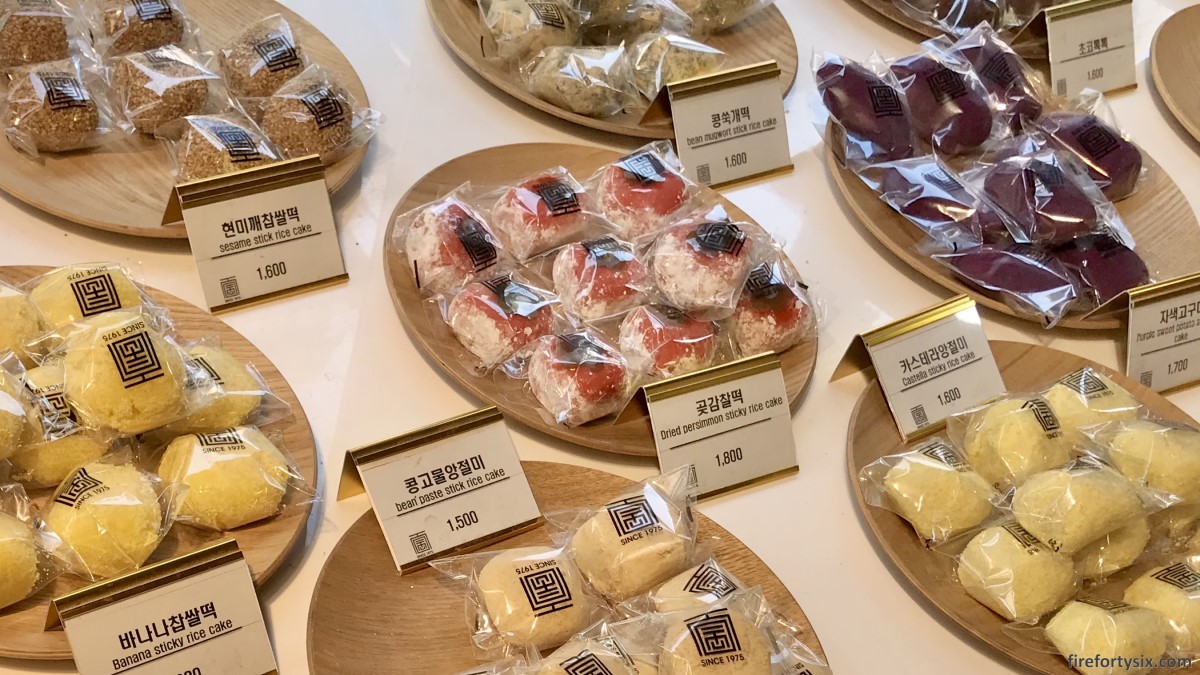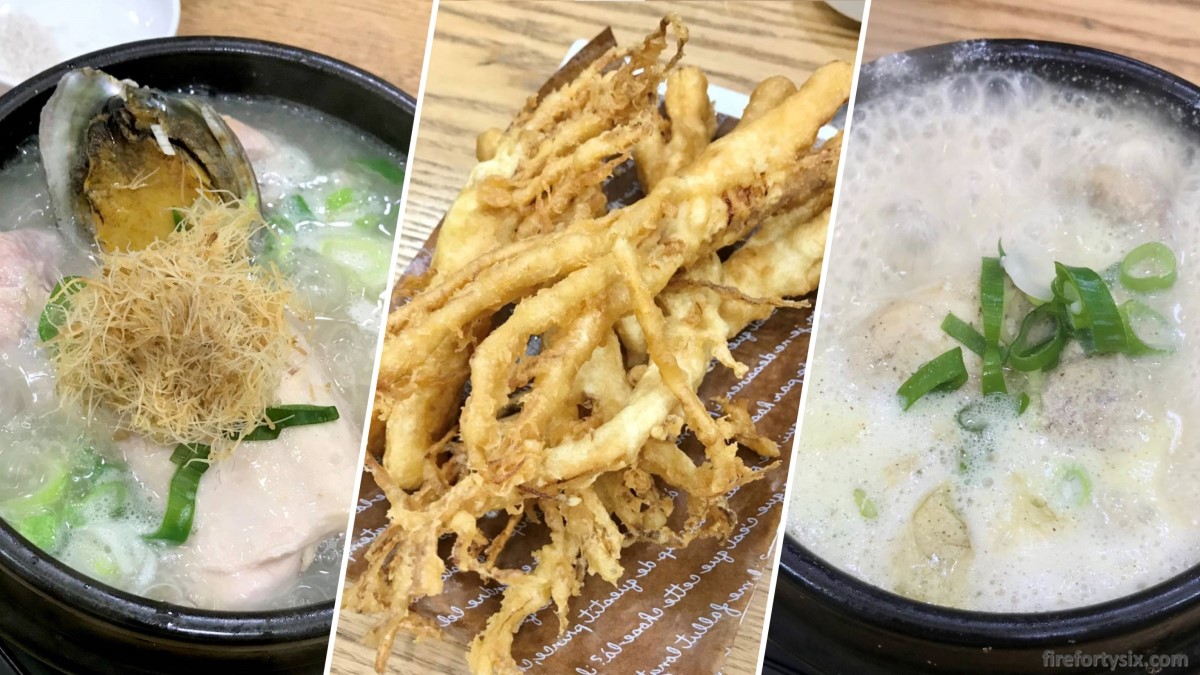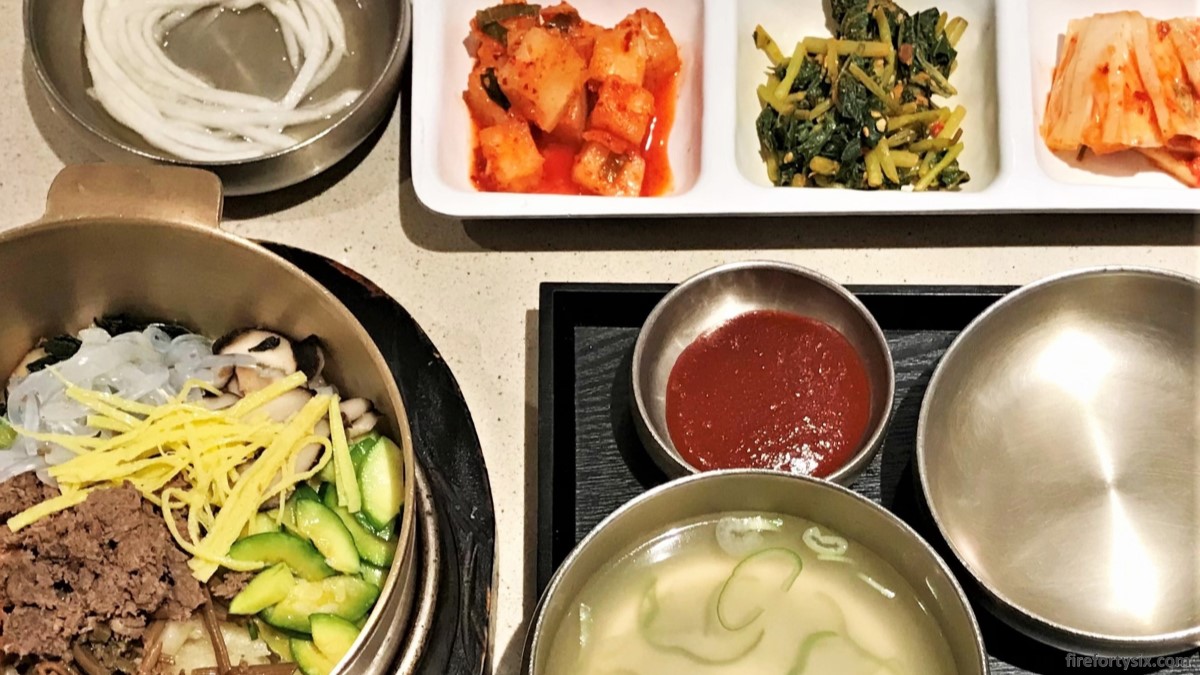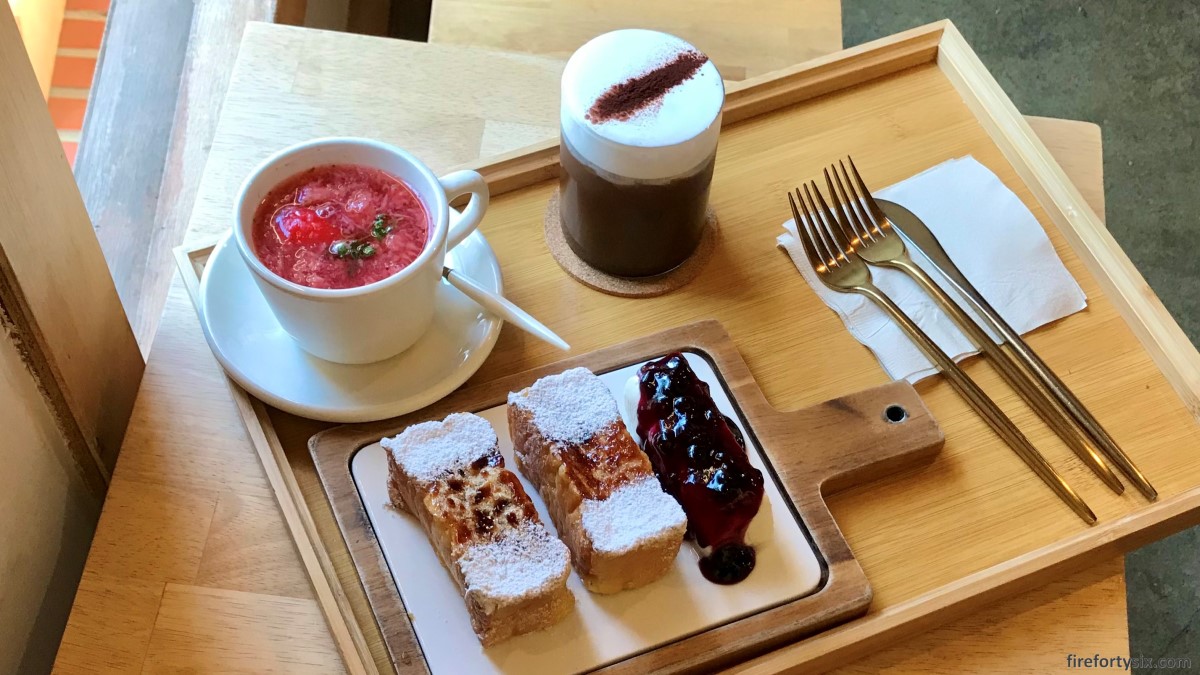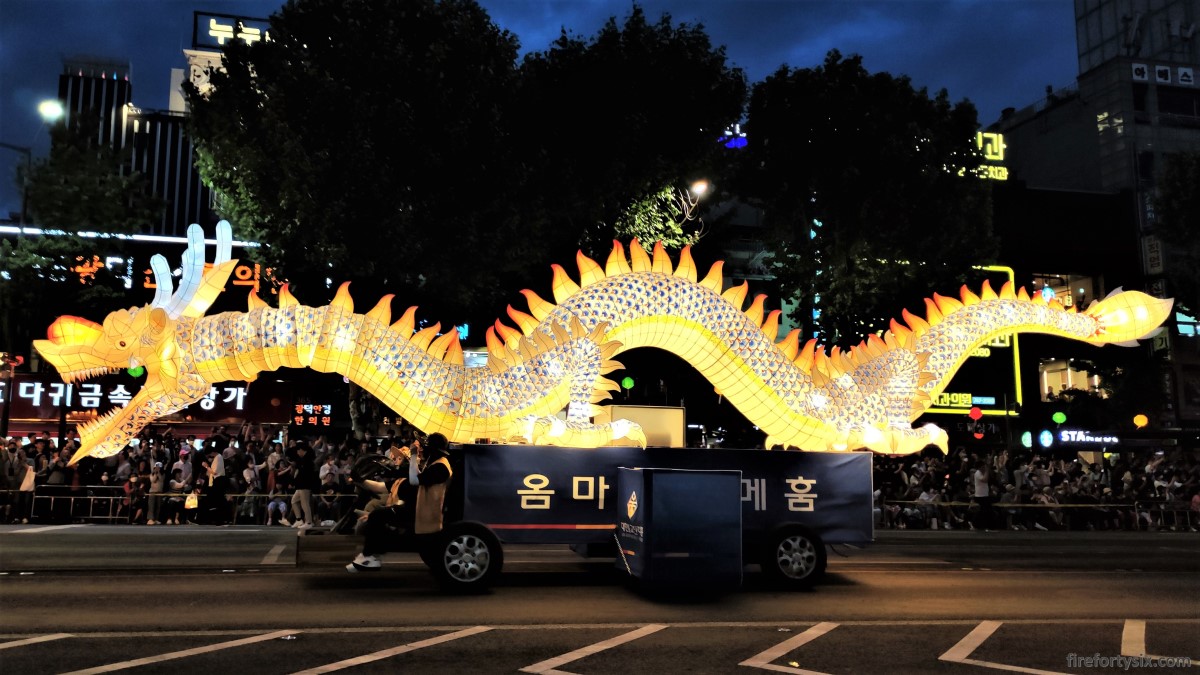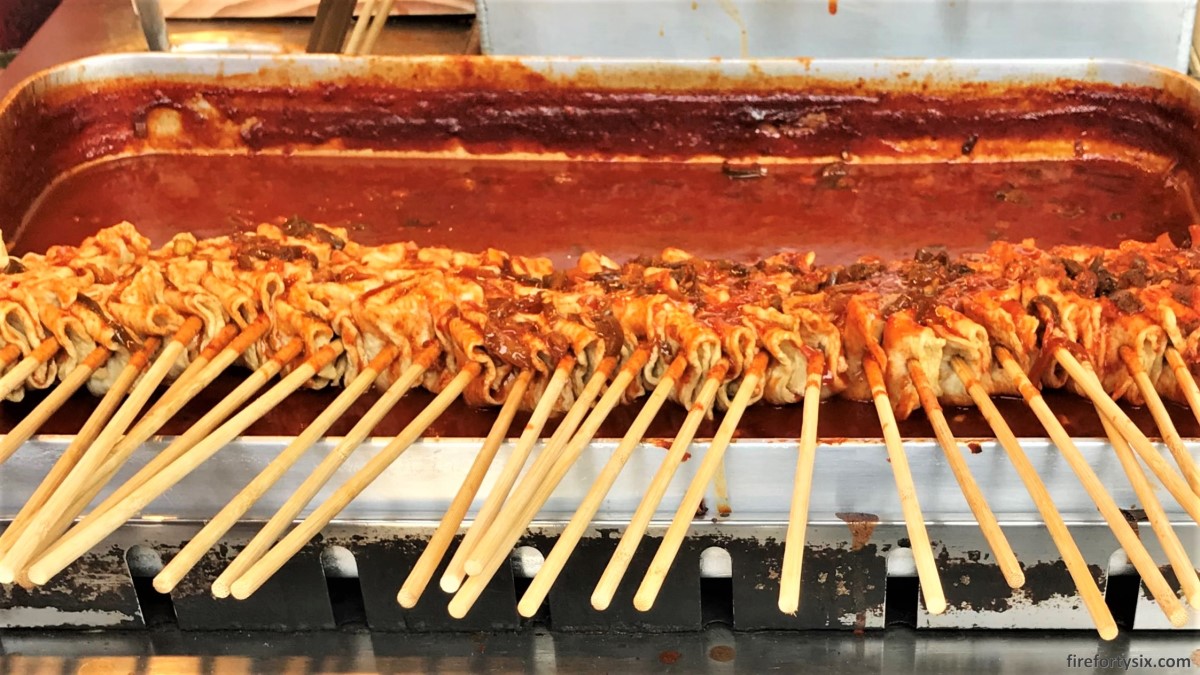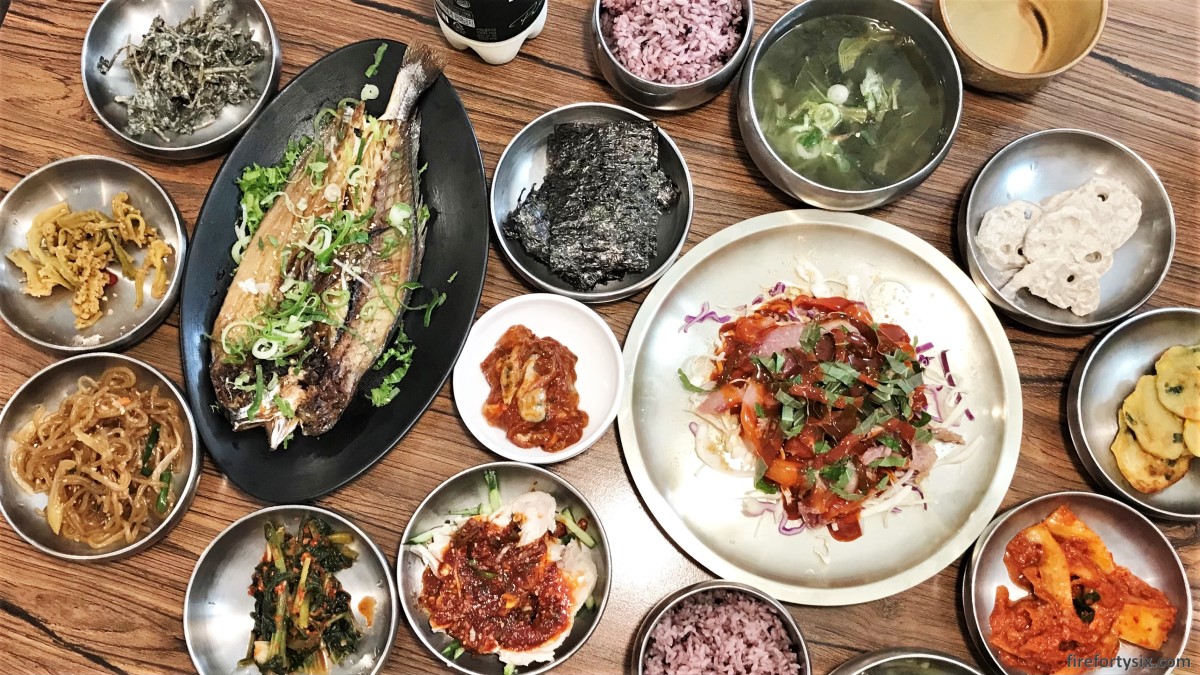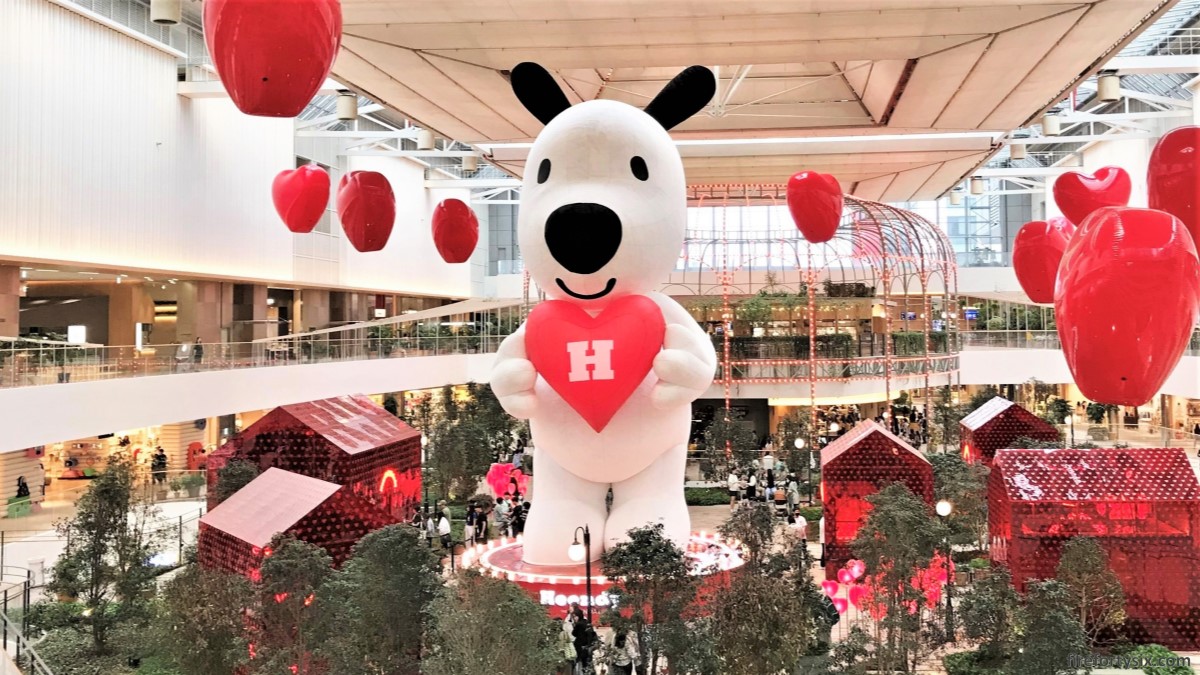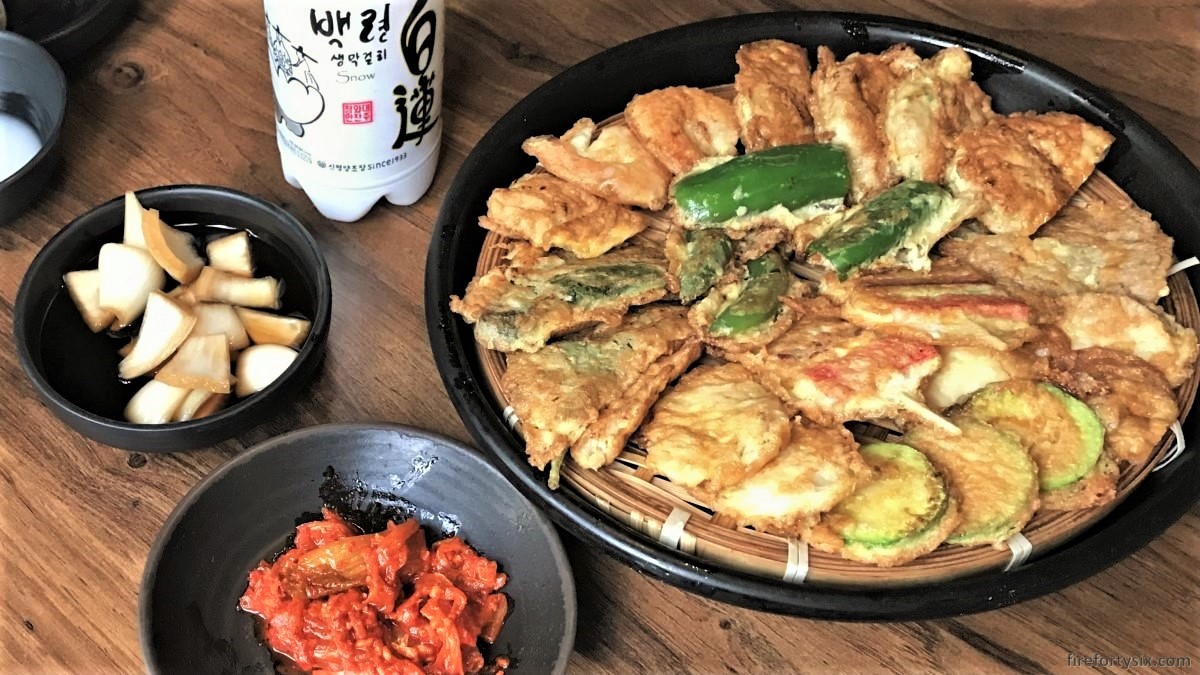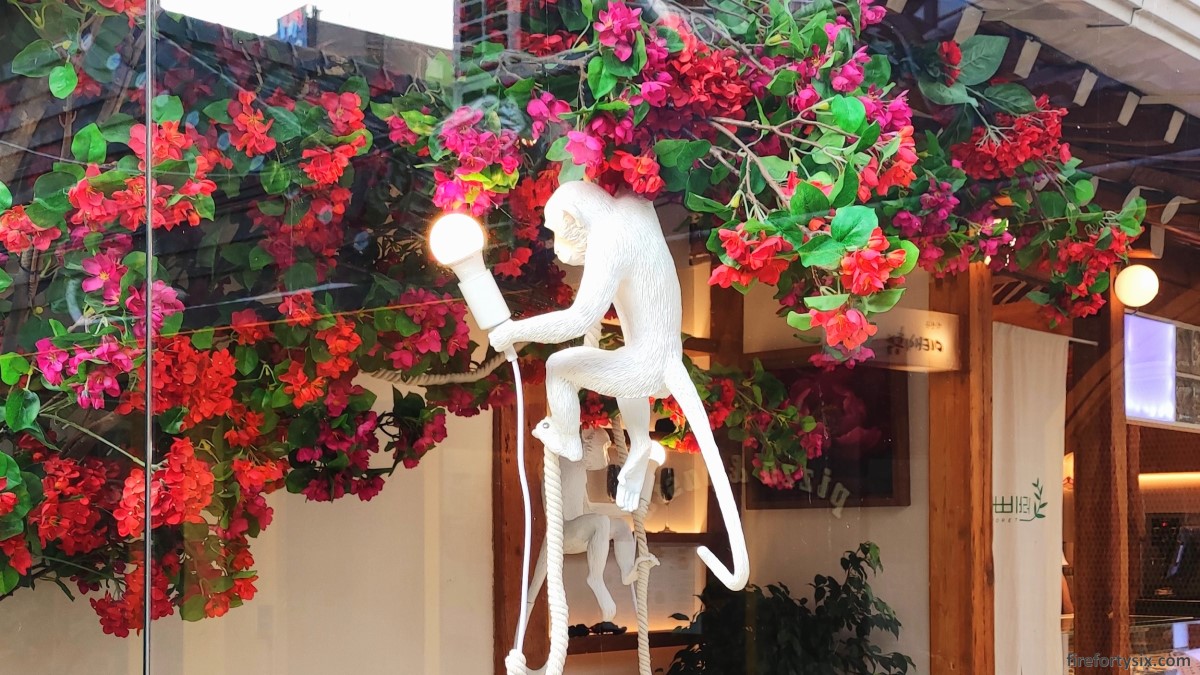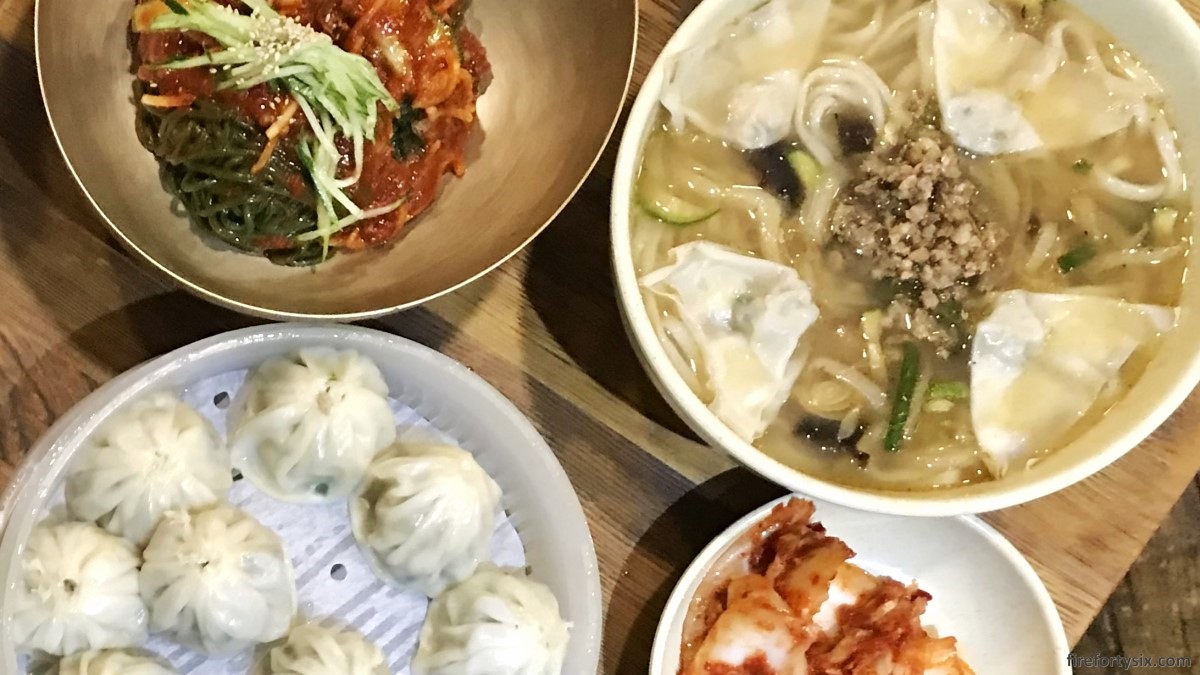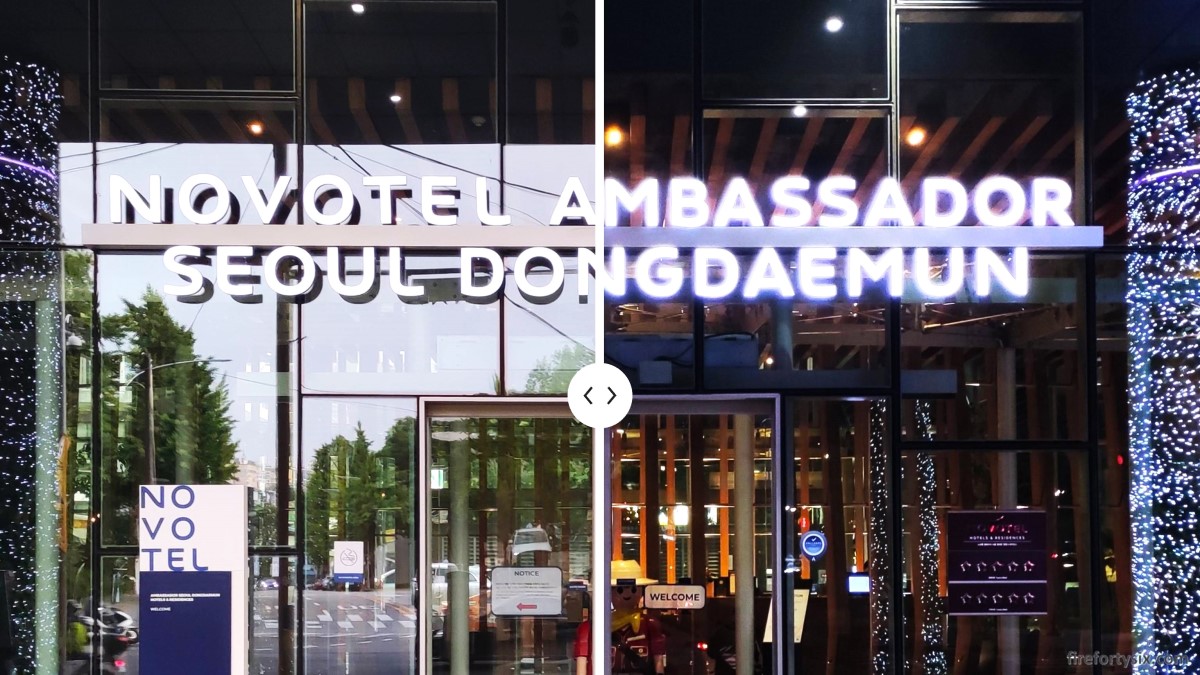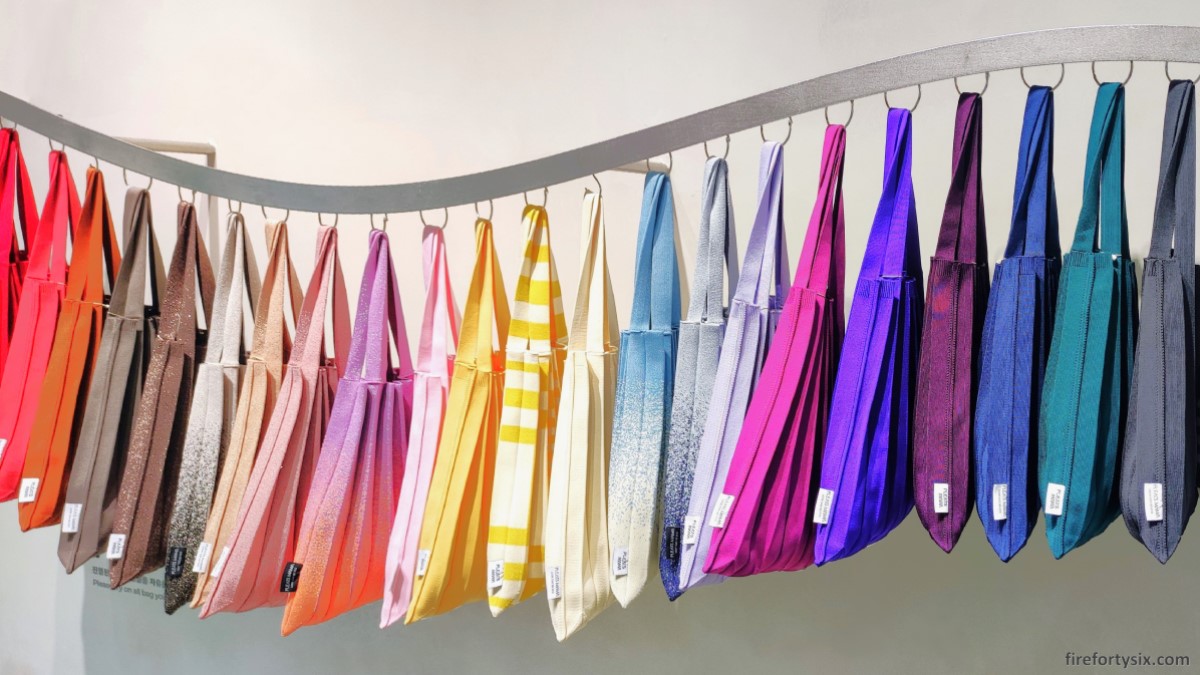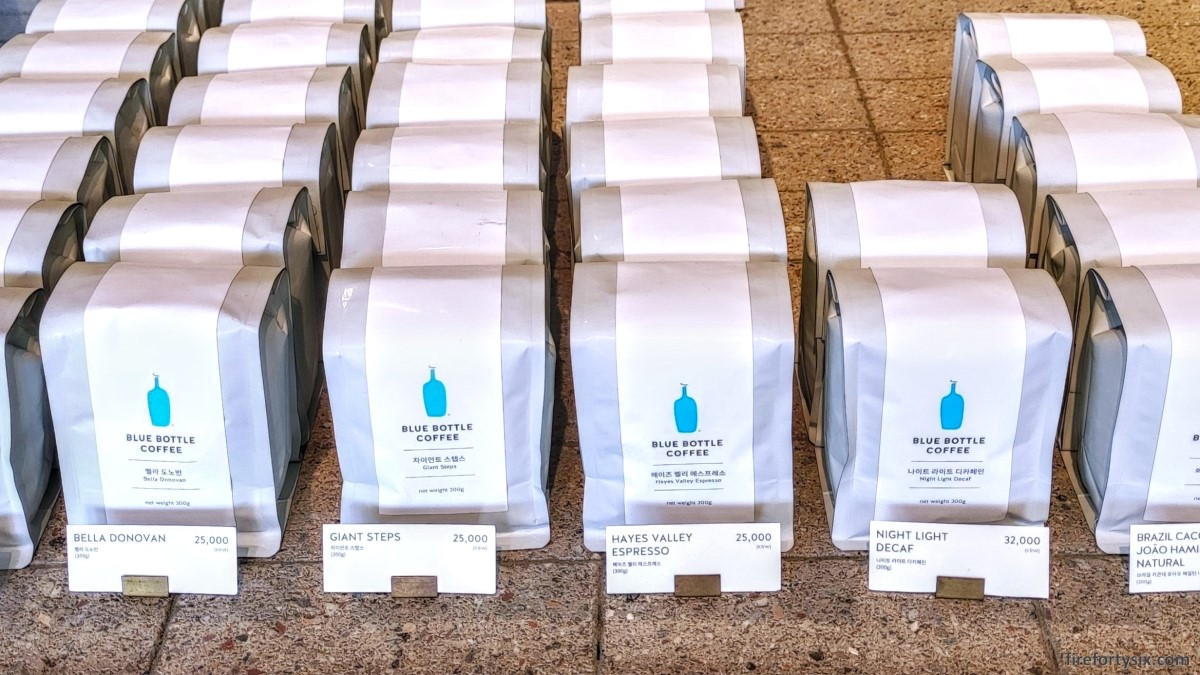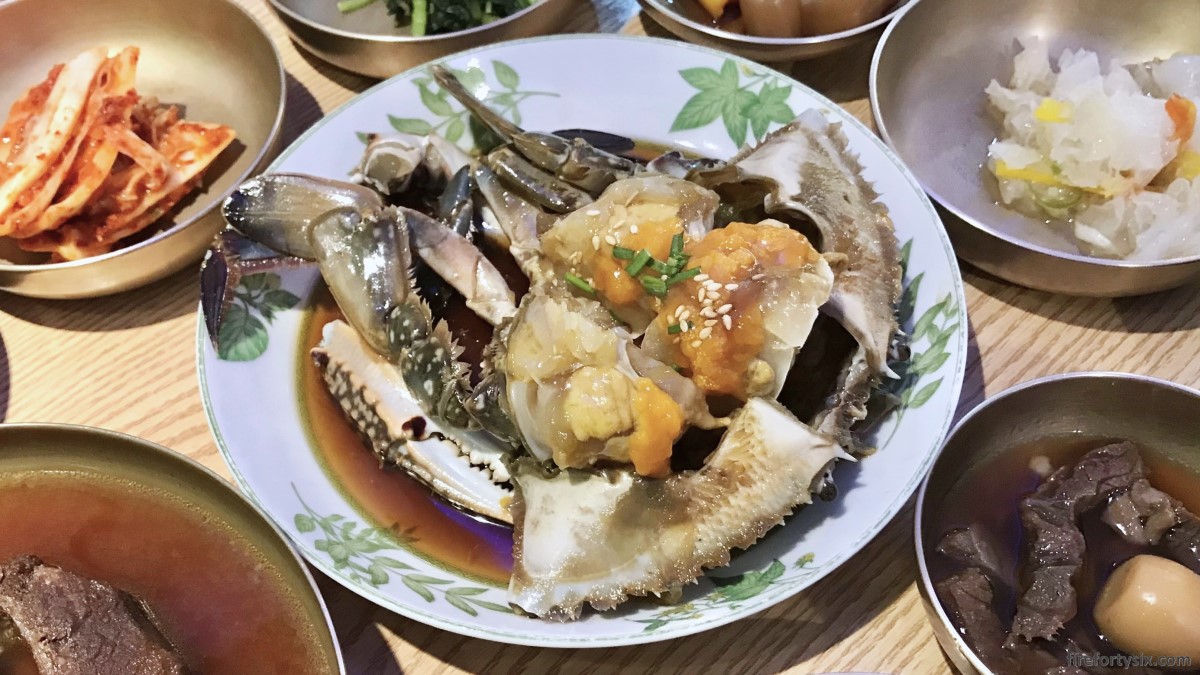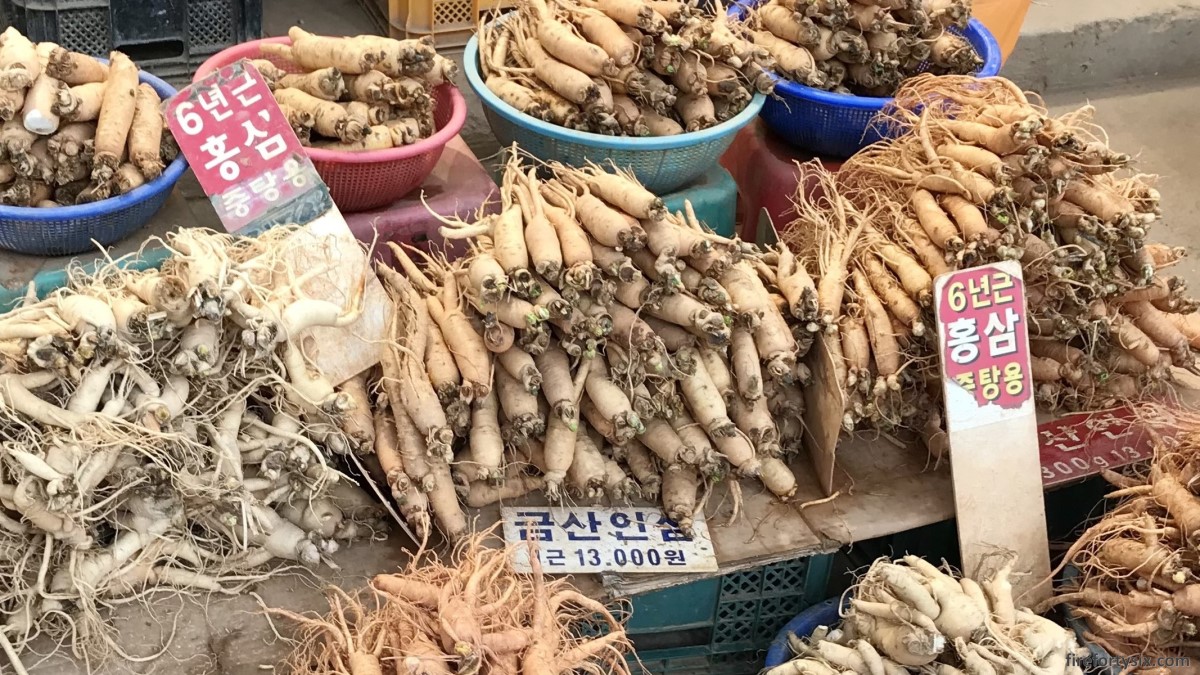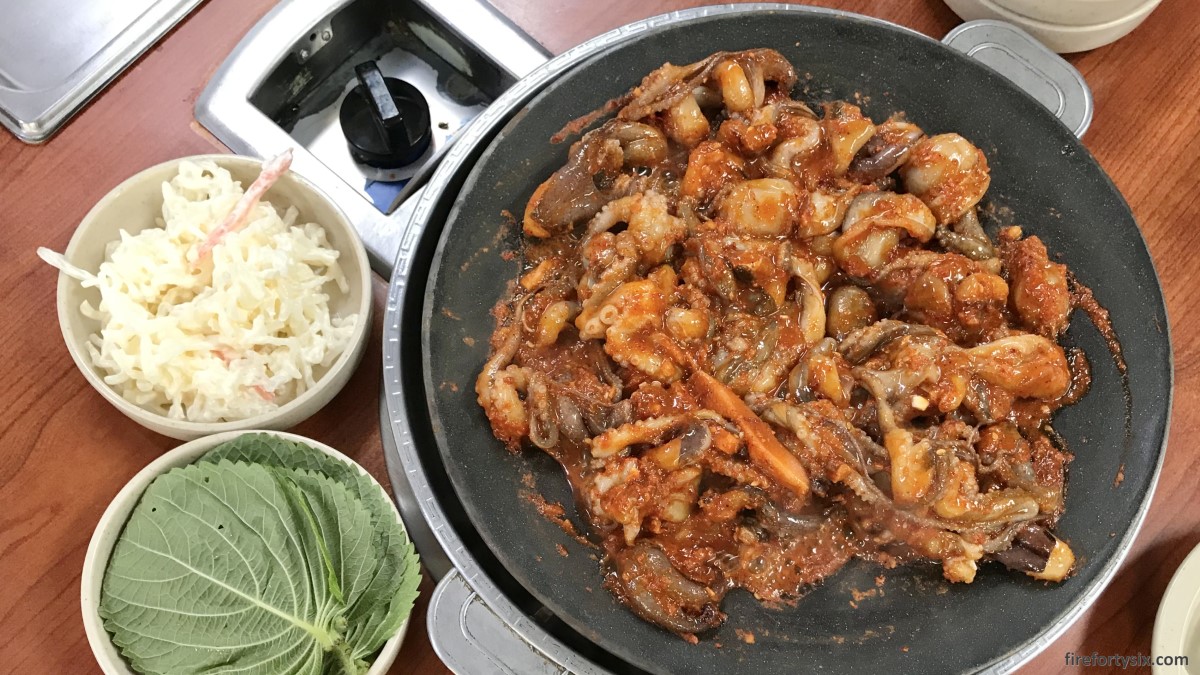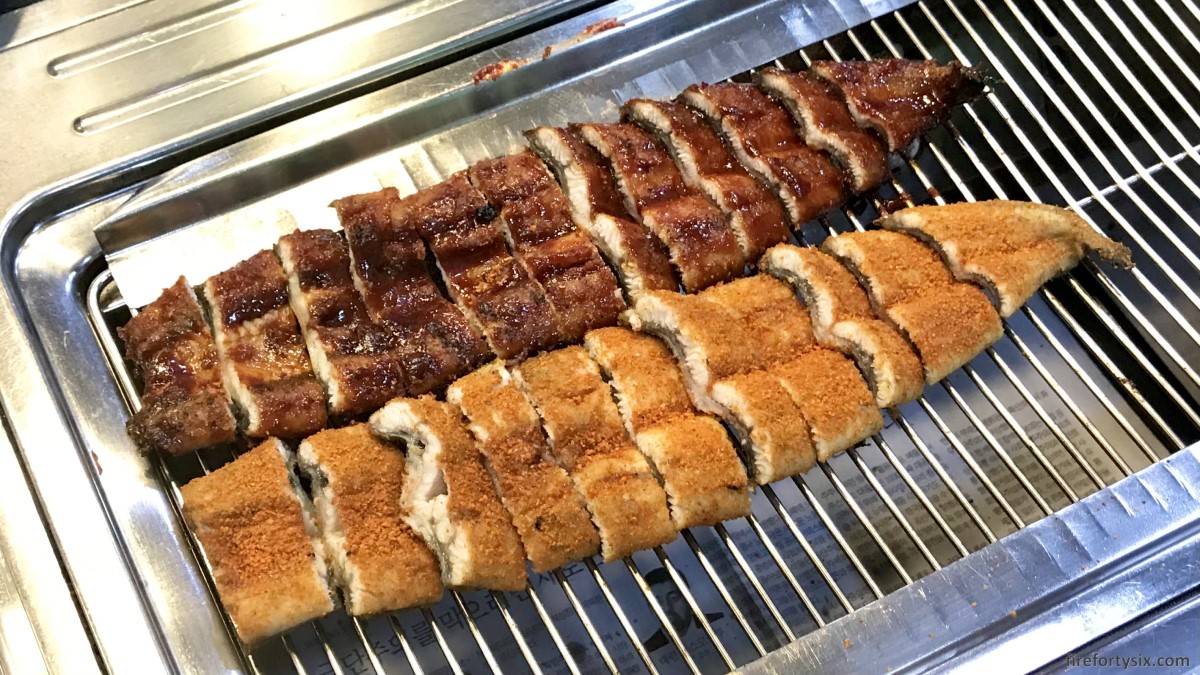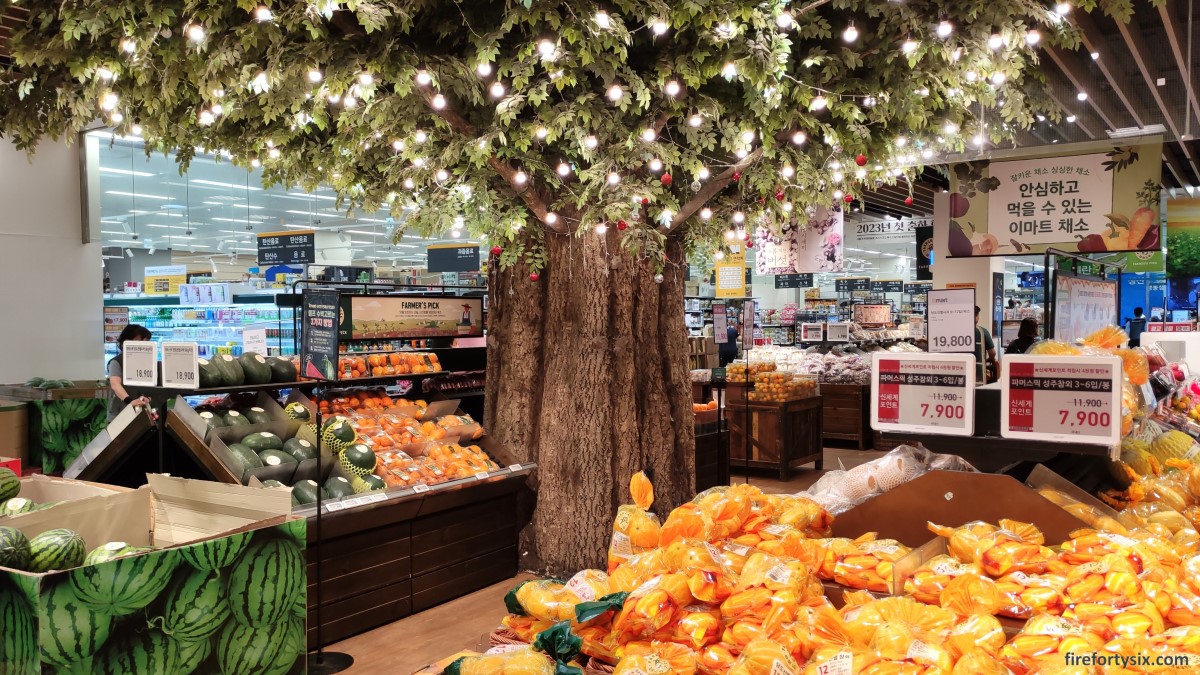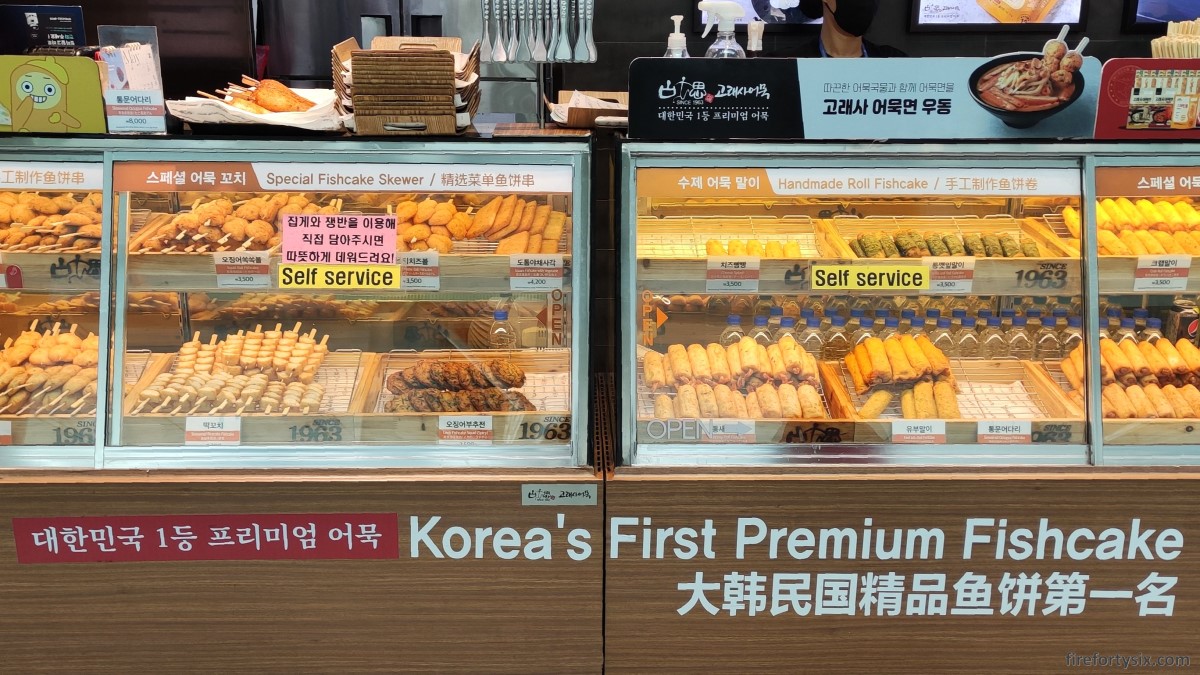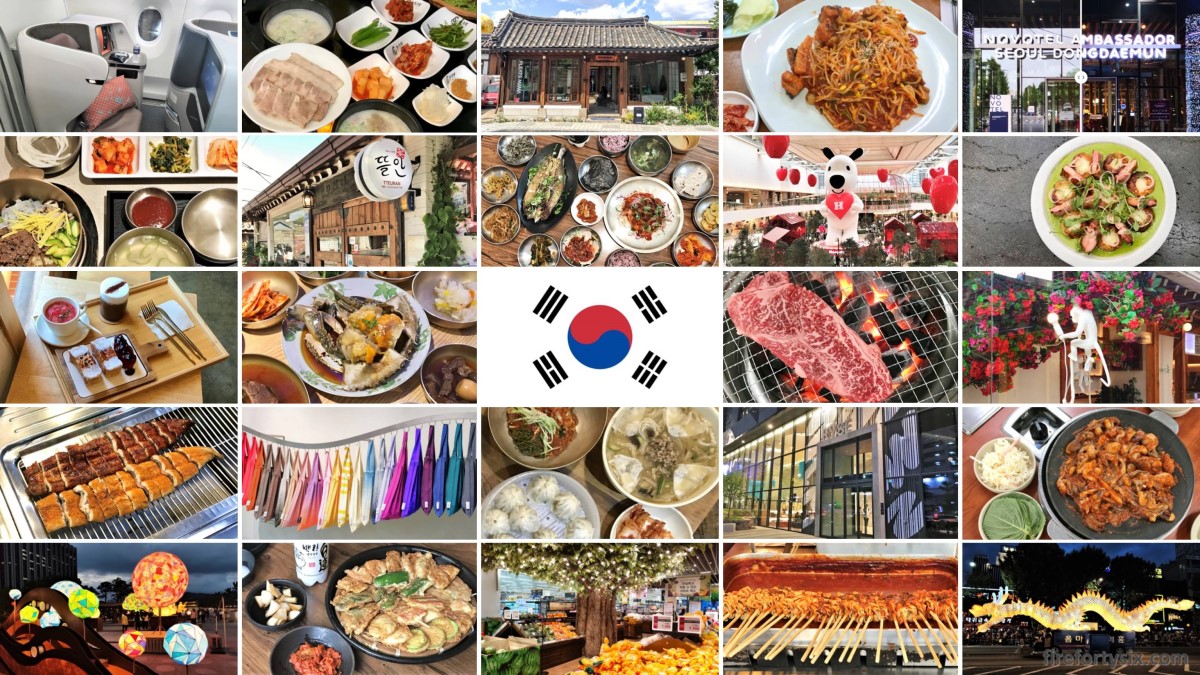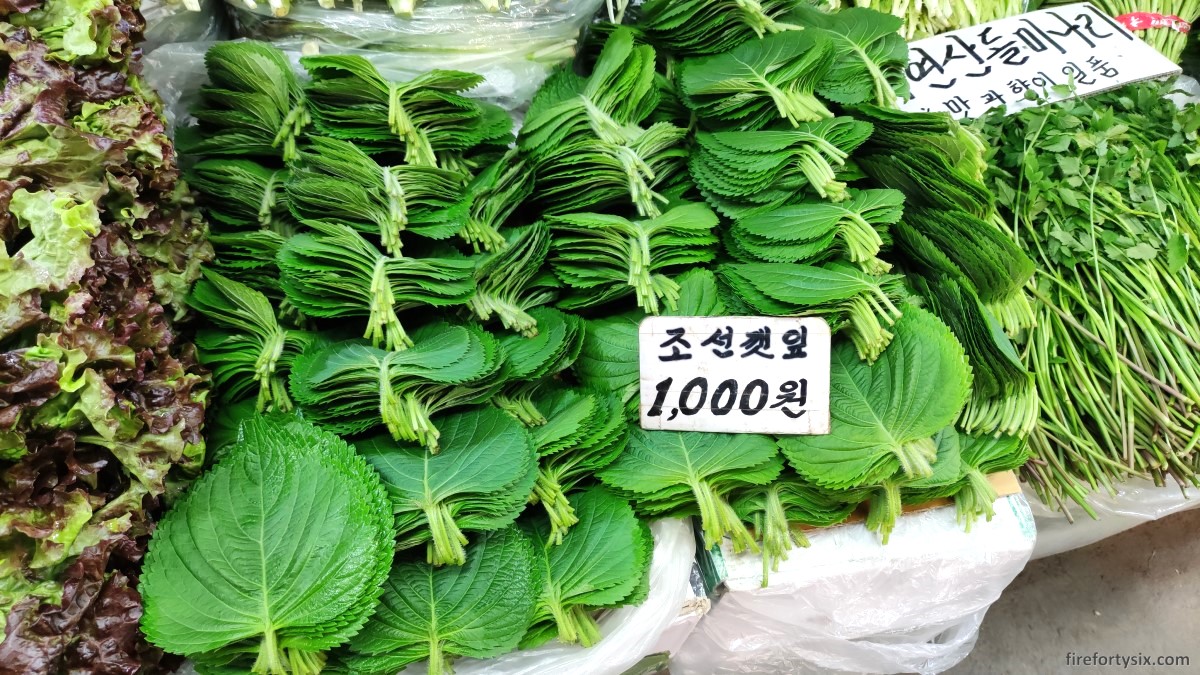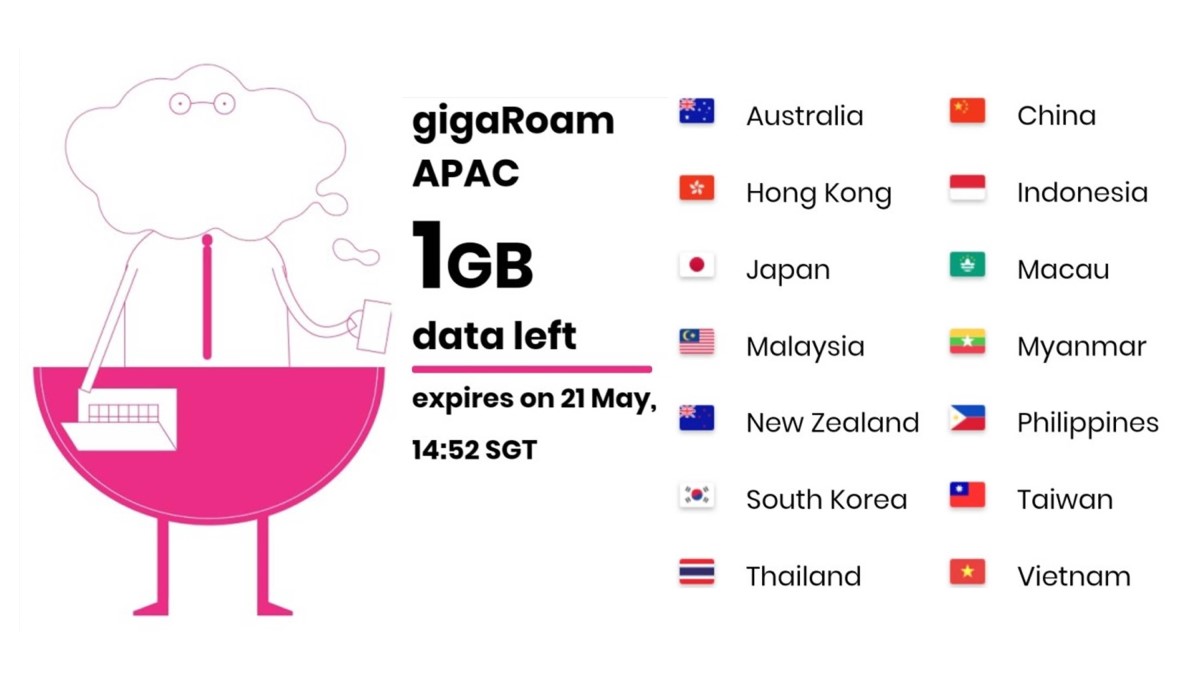The first time we tasted Hanwoo (한우) was several years ago at La Yeon, a Korean fine dining restaurant at the top floor of the fancy Shilla Hotel in Seoul.
It was part of a multi-course set meal, and the beef was served two ways — char-grilled sirloin and braised short ribs. Both were delicious and the chewy and flavourful meat balanced delicately with the soft and juicy fat.
Since then, we’ve been on the lookout to try Hanwoo again, preferably at a friendlier price point. Unfortunately, it’s not readily available in Singapore, and even if it was, the cost would be prohibitively expensive.
Therefore, I came up with a simple plan:
- Step One: Plan another vacation to Seoul
- Step Two: Get as close to a Hanwoo cow as possible
- Step Three: Take a bite of the aforementioned cow
But since we don’t actually know any South Korean cattle farmers, the best we could do was to visit the Majang Meat Market (Naver Maps, Google Maps).
Getting There by Bus
Naver Maps said that it was a nine minute walk from the Majang subway station on Line 5. Alternatively, Bus 2015 from Dongdaemun History & Culture Park (stop #02174) near our Novotel would drop us just outside the market.
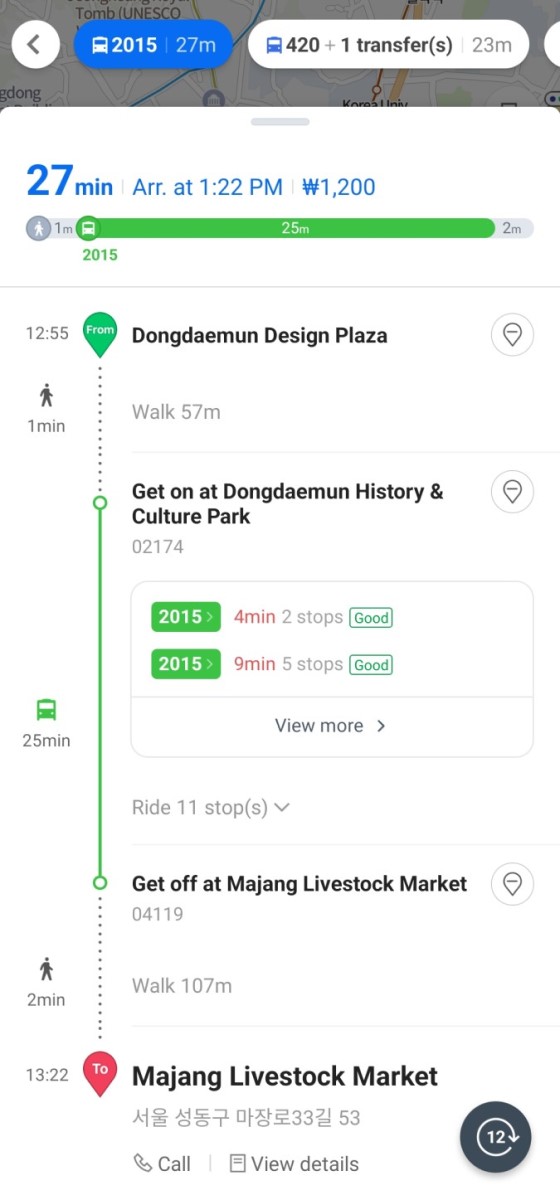

Normally, I would have opted for the subway, but ever since we figured out how to use the bus, the choice was obvious. Especially since we would also get to see the neighbourhood during the 30 minute ride.
All of the 11 stops were listed on Naver Maps, and real-time location tracking showed us exactly where we were on the route. There’s practically no chance of getting lost, or worse, accidentally ending up in Pyeongyang.
I have to say that the more I’ve taken the bus in Seoul, the more I actually prefer it to the subway. It gets me closer to where I want to go, the view is more scenic and there’s no need to climb long flights of stairs.

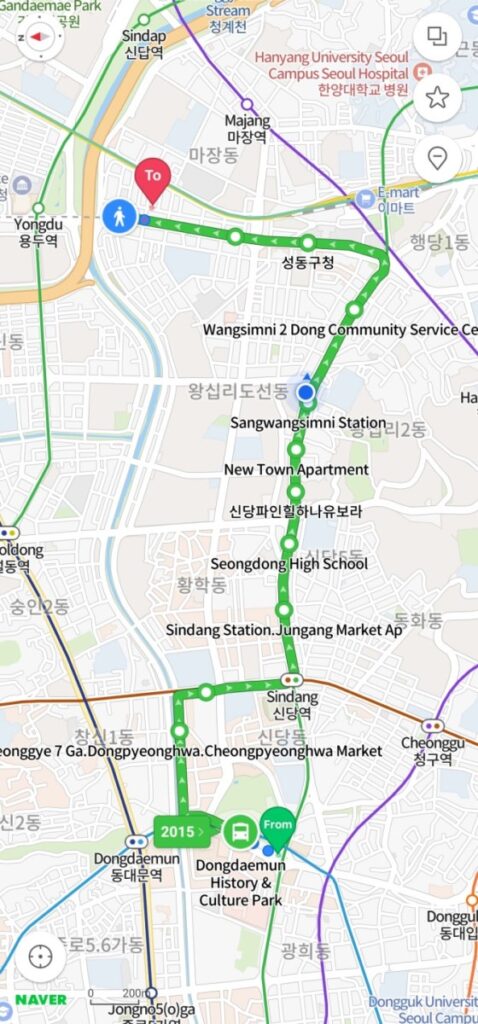
After ringing the bell and getting off our bus, we saw the unmistakable Majang Meat Market signboard, with its distinctive huge cow head and a cute little pig.
I had seen photos of the entrance in many online posts and reviews, but finally seeing it in real life filled me with a sense of anticipation and excitement.
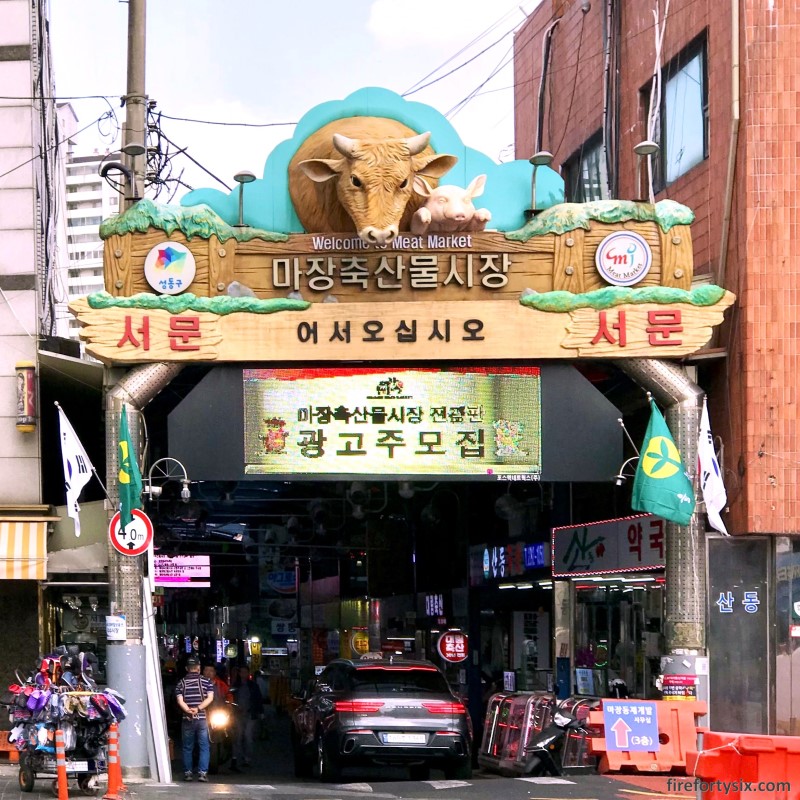
Choosing a Butcher
There was no mistaking the fact that we were walking into a meat market. It had a high ceiling and was clean and well ventilated, but the scent of raw meat still lingered in the air.
The smell wasn’t off-putting or overbearing. Instead, like Groot, it simply stated: “I am meat market.” Or as Yoda would put it: “Meat market, I am.”
Butcher shops lined both sides of the long street and we had frankly no idea which to choose. There wasn’t much touting going on, but some shops were fronted by over eager ajusshis or halmonis trying their best to entice us.
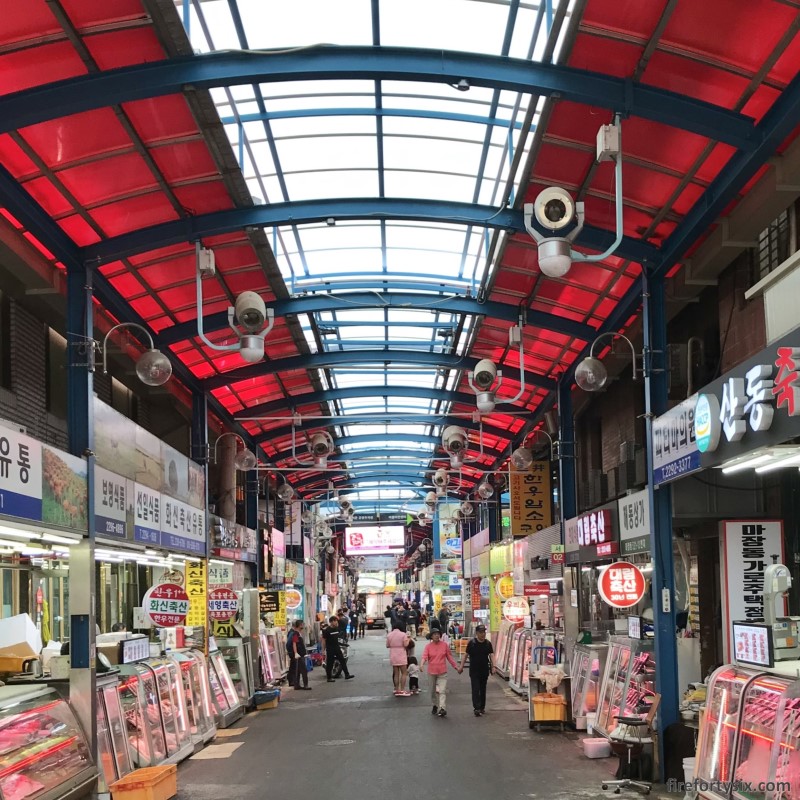
As first timers, we found it quite overwhelming. It’s good to have choices, but sometimes, having too much choice is not necessarily good.
After walking about 100m into the market, we passed a shop fronted by a chubby man who had a kind and friendly look. The yellow signboard said Jayeon Chukssan (자연축산) (Naver Maps, Google Maps), loosely translated to “Natural Livestock”.
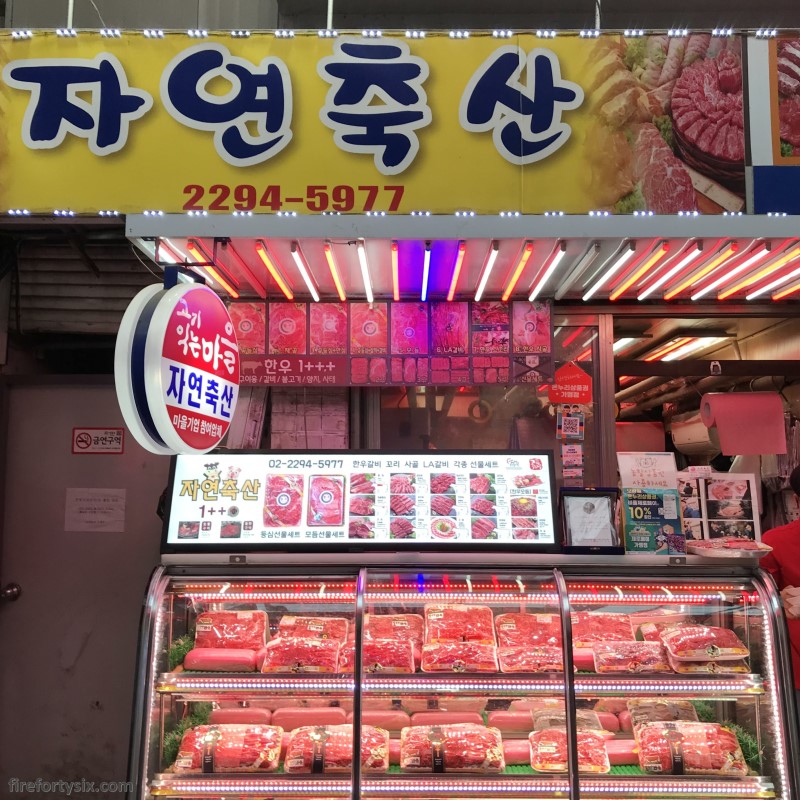
Their meat chiller was stocked with pretty packages of beef, with weights and prices clearly labelled. A plaque from the Korean Beef Association was prominently displayed, declaring that the shop sold the highest 1++(9) grade of Hanwoo with the most marbling.
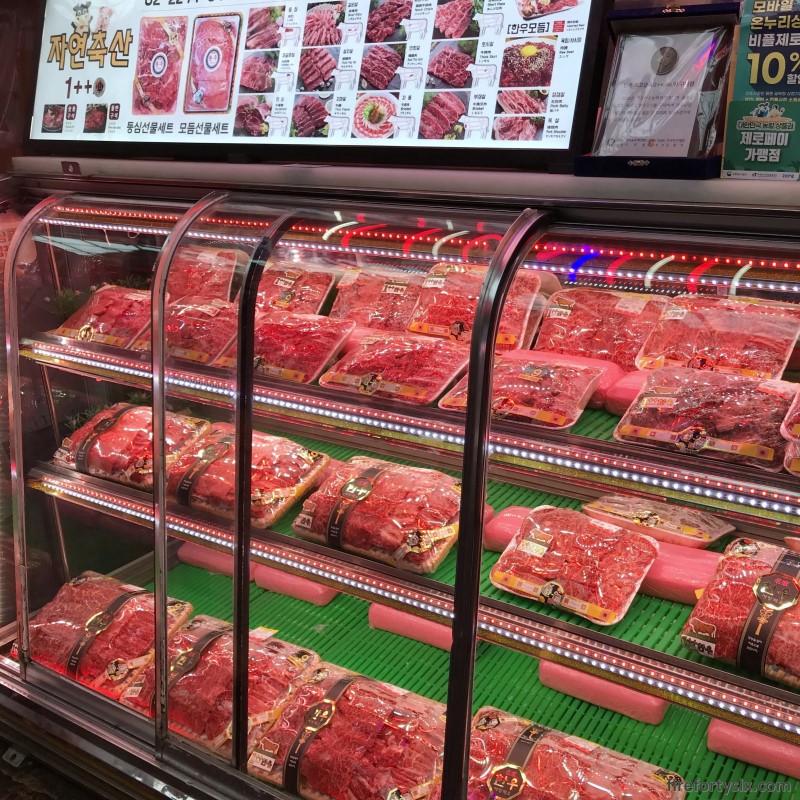
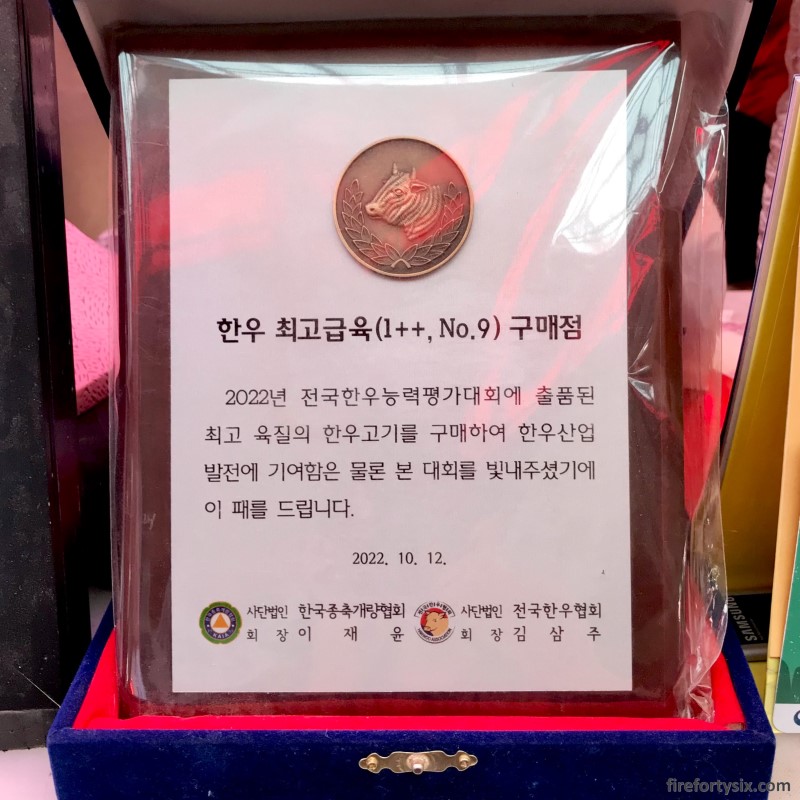
I decided that this would be the butcher’s shop that we would procure our meat from. There wasn’t any scientific basis, just a gut feeling that we would be treated fairly.
Buying the Hanwoo
The man at the shop gave me his namecard and introduced himself as Nam Joo Young. I immediately did a double take upon hearing the very familiar name.
“Nam? Nam?” I repeated, followed by an incredulous: “You are hyung of Namgoong Min?!” Hyung meaning older brother in Korean.
He let out a huge belly laugh and violently waved both his hands in denial, while simultaneously declaring: “No! No! No!”

It seems he wasn’t related to the superstar actor, famous for award-winning roles in K-dramas like Hot Stove League and The Veil.
Or maybe, just maybe, he was simply being modest and didn’t want to bank on his brother’s fame. To be honest, there wasn’t any familial resemblance, but I guess I’ll never really know for sure.
He quickly got down to business and pointed to a useful poster sitting on top of the chiller. It had photos of different cuts of beef, with names in four different languages, and accompanied by pictorials showing which part of the cow they came from.

We had no clue what to buy, and went with the recommendation of not-Namgoong Min’s brother. He told me the names of each of the cuts in halting English, but I was so distracted by how beautiful the meat looked that I completely forgot everything he said.
Looking at the photo now, and comparing it against the informational poster, my best guess would be, from left to right: striploin, chuck flap tail, rib and thin skirt. I’m confident that I’m at least 50% correct.
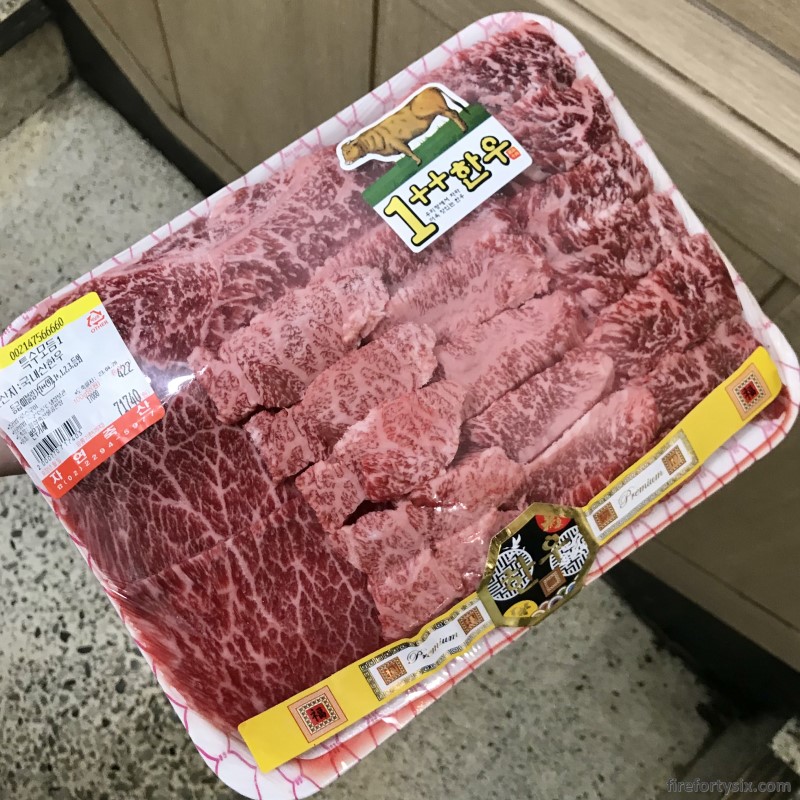
The platter contained 422 grams of beefy goodness, and at ₩17,000 per 100 grams, the total came up to ₩71,740. I offered to pay in cash and he rounded the price down to ₩71,000, or about S$71.00. In addition, he threw in some free sliced brisket and raw beef for yukhoe.
For such a large amount of certified top-grade Hanwoo, that seemed like a very reasonable price to pay. I’m quite sure that it would have cost way more at a BBQ restaurant in Myeongdong or Hongdae.


Choosing a Restaurant
Butchers and restaurants have a symbiotic relationship at Majang Meat Market. Once you’ve secured your raw meat, you’re free to go to any of the numerous BBQ restaurants to cook and eat it.
Having said that, each butcher typically has their preferred restaurant recommendation, and since we didn’t have any specific one in mind, we were happy to let Nam Joo Young shi guide us to one.
We followed behind as he led us to a nearby flight of stairs, pointed to a signboard with a red and white logo and told us to go up to the 3rd floor.
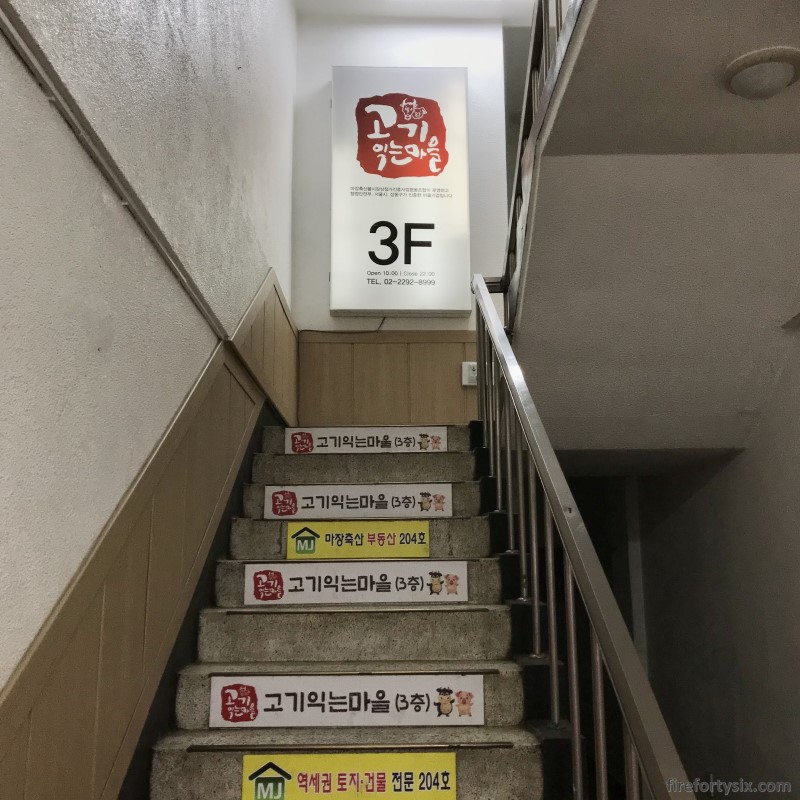
The stairway looked a bit dark and dubious and we wanted to re-confirm with him to be sure. We turned around to ask, but he had already vanished, just like Keyser Söze.
It progressively got brighter as we ascended, until we saw posters with cheerful cows and pigs, beckoning us to enter. Clearly, they didn’t know what fate had in store for them.
The restaurant name was Gogi Ingneun Maeul (고기익는마을) (Naver Maps, Google Maps), loosely translated to “Meat Cooking Village”. Yup, sounds like exactly where we needed to be.
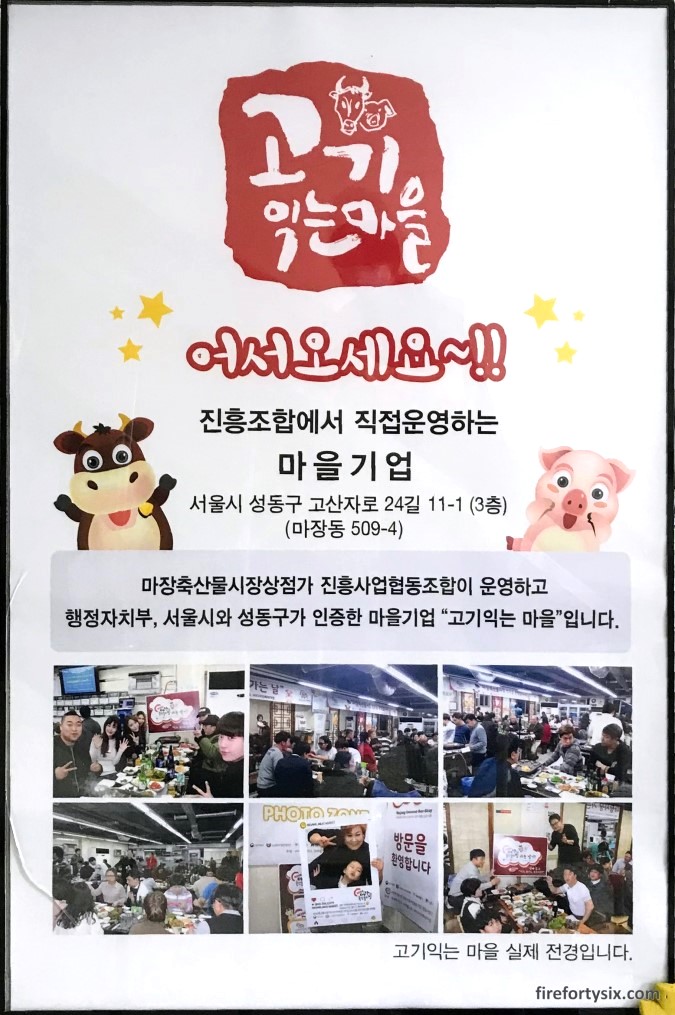
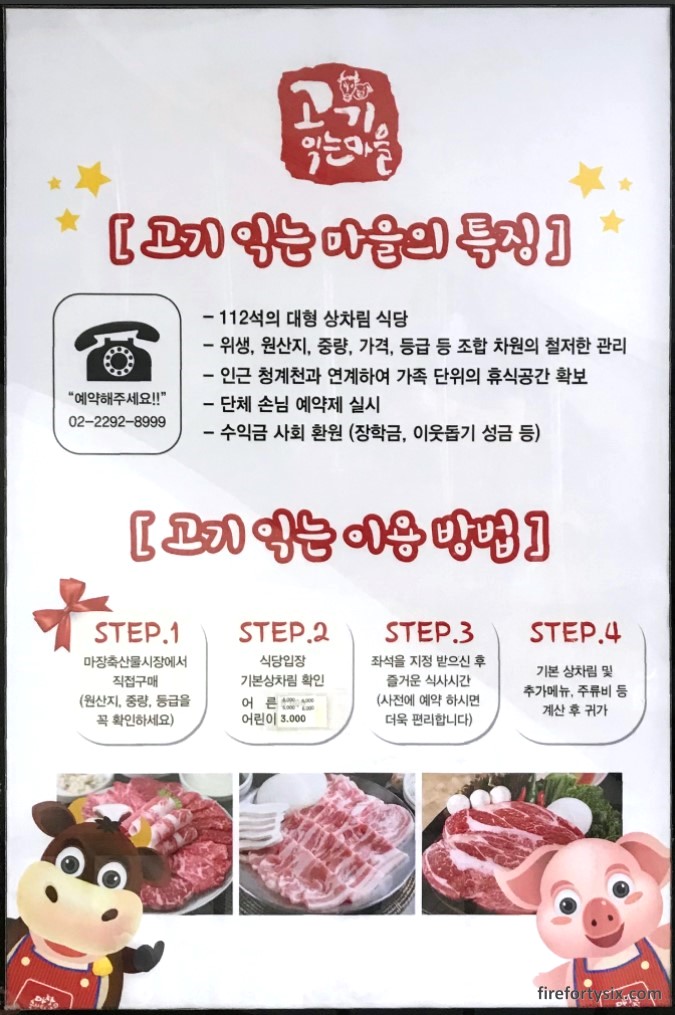
One of the posters articulated a four step process in Korean, which I used Papago to translate into English. It basically boiled down to: (i) buy meat, (ii) bring to restaurant, (iii) cook/eat and (iv) pay. Easy peasy.


Table charges were ₩6,000 per adult (₩3,000 per child). In addition, the restaurant also sold other dishes like gyeranjjim, galbitang, naengmyeon etc.
Drinks were also chargeable and self-serviced from the large refrigerator in front. Unsurprisingly, soju and beer from different brands dominated the selection.
Additional servings of complimentary kimchi and kongnamul were free-flow from the self-service station, where seasonings like salt and sesame oil were also kept.
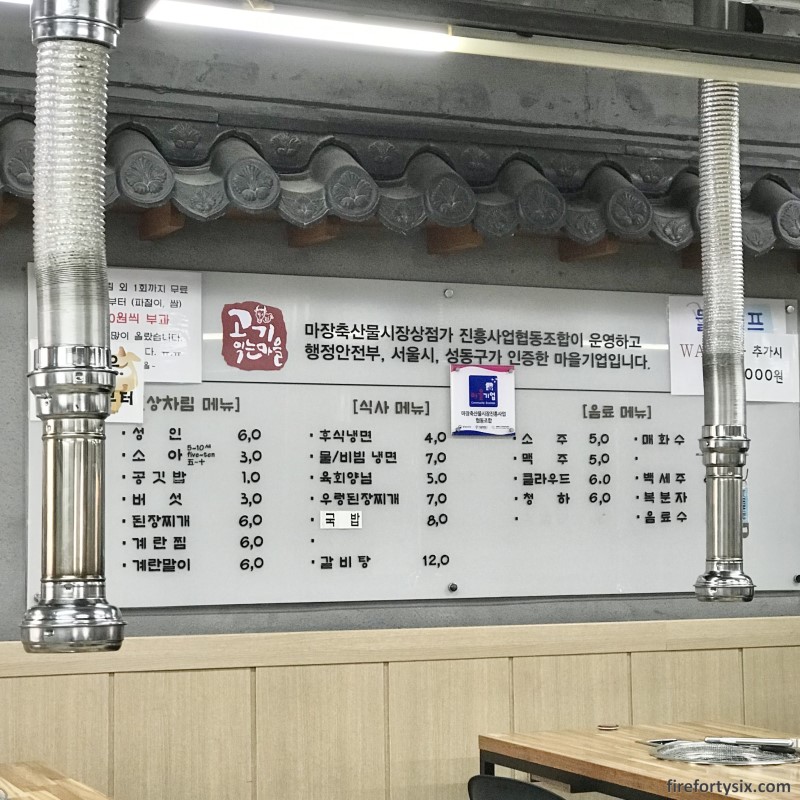
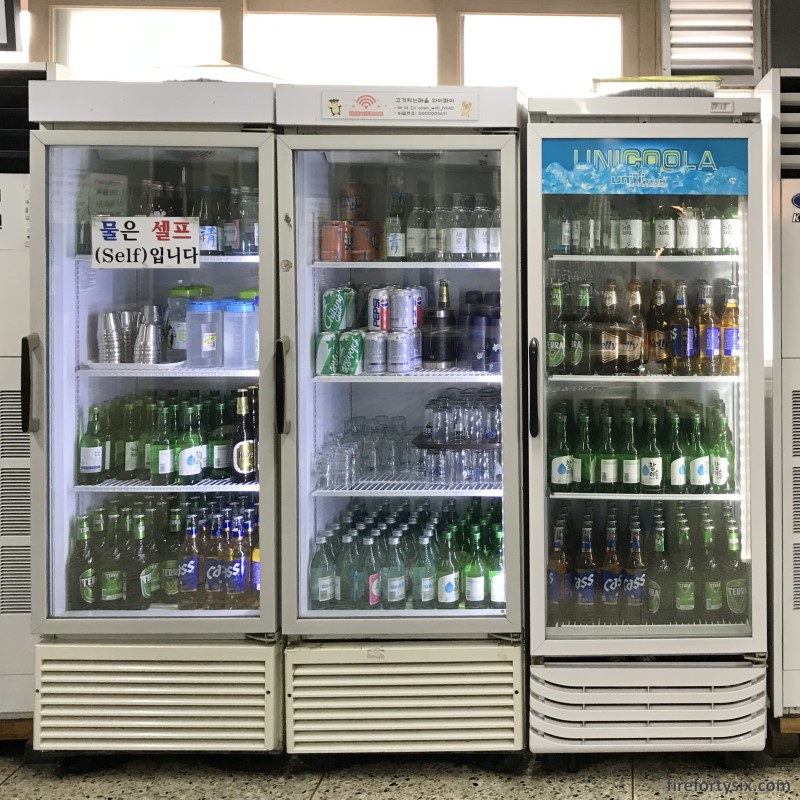
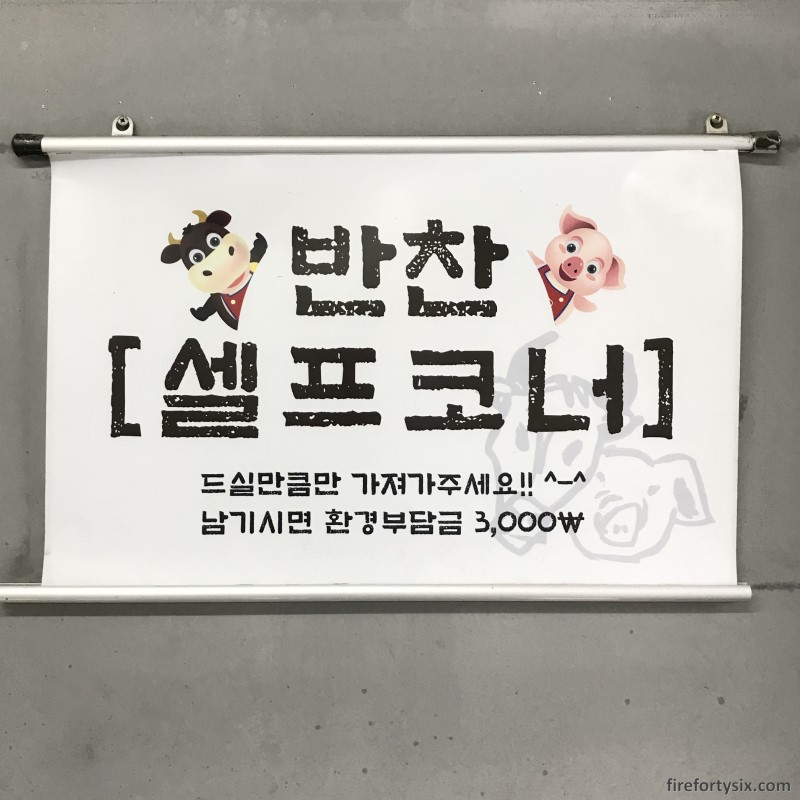
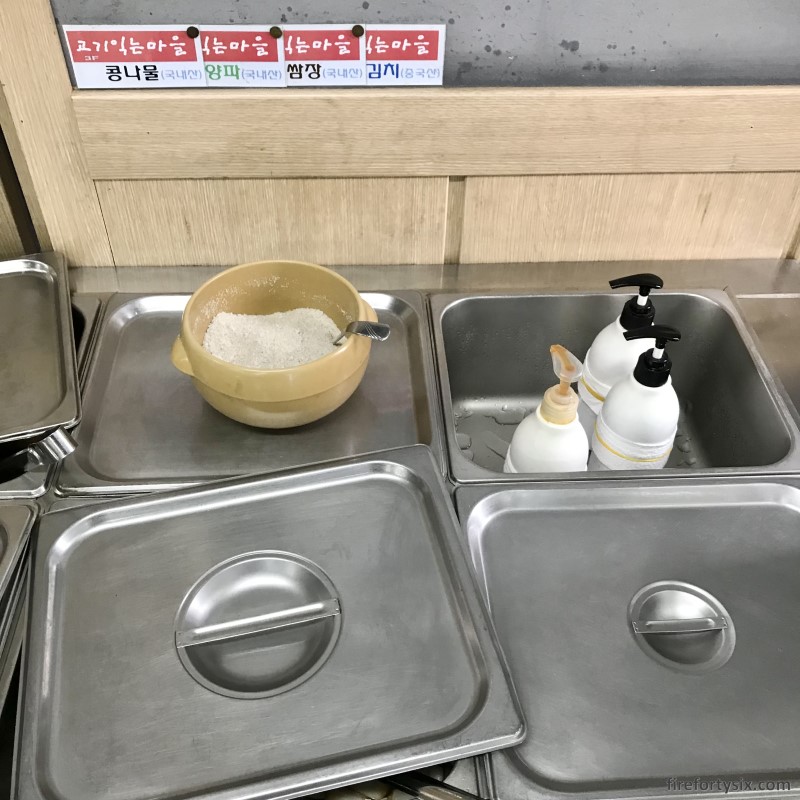
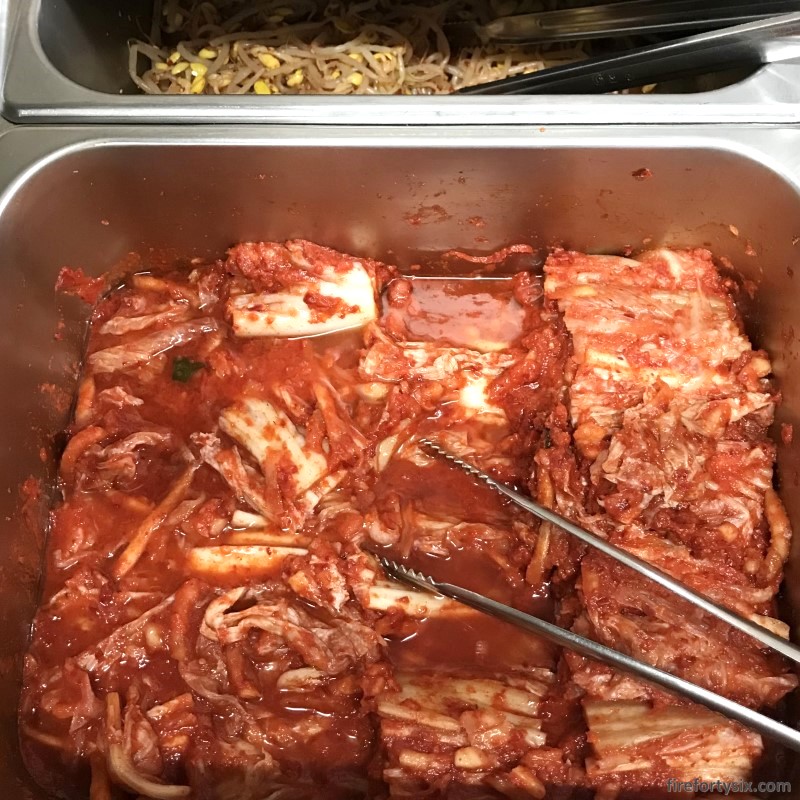
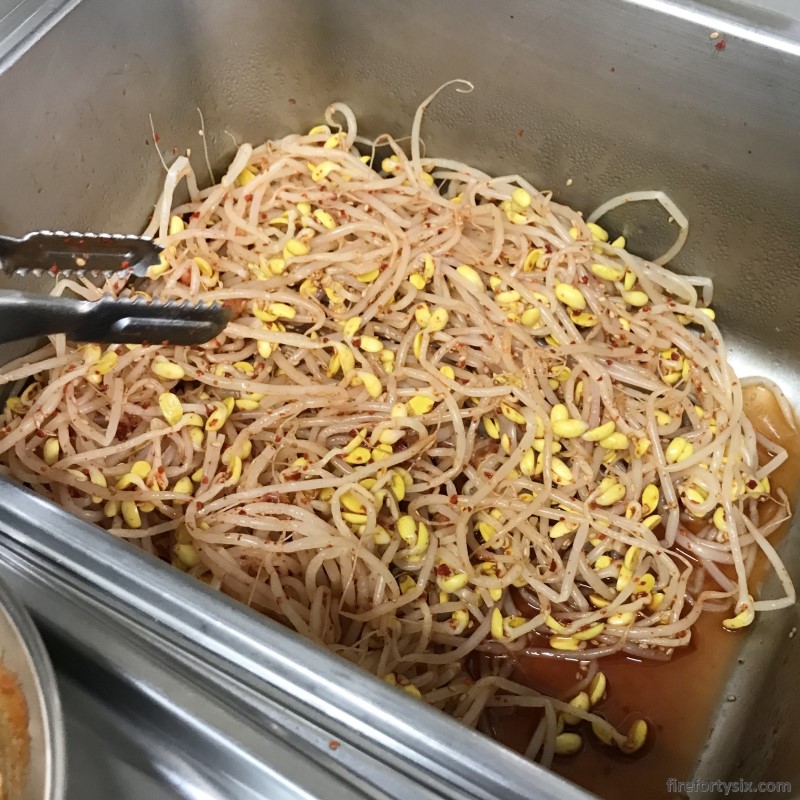
Cooking the Hanwoo
Once we were seated, an ajumma unnie promptly set up our table with heated charcoal, plates, tongs, scissors, banchan and seasonings, as well as lettuce and kkaennip leaves for ssam’ing. She wasn’t smiley, but she was fast and efficient.
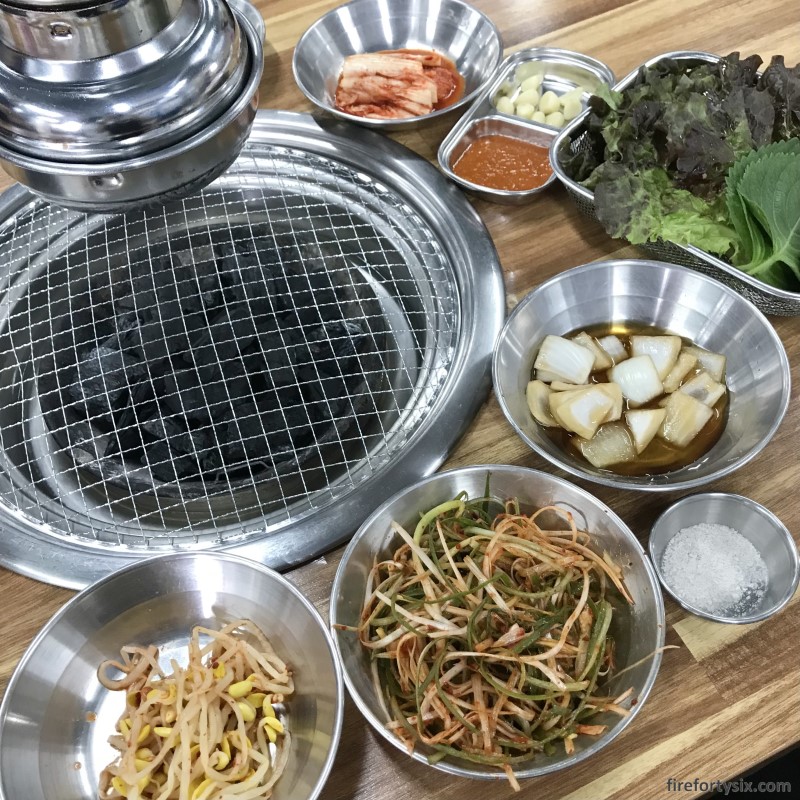
Our heavy styrofoam platter of Hanwoo made a very satisfying thud as I plonked it onto our table. Before unwrapping the transparent cling film, I took a moment to admire the dark red meat with its snow white marbling.

The Wife likes to BBQ meat, but it’s an activity that she doesn’t get to do much at home. So, being the lazy considerate husband I was, I let her do all the cooking.
There’s something about a charcoal fire and burning embers that makes beef look so appetising as it cooks. We waited impatiently as dancing flames seared the surface of the meat, and drops of fat fell into the fire, setting off sexy sizzles.
She took her time to cook each cut on the grill, placing small amounts each time so that she could control the doneness of the precious Hanwoo. The bigger slices were kept intact in the beginning, and then cut into bite-sized pieces towards the end.
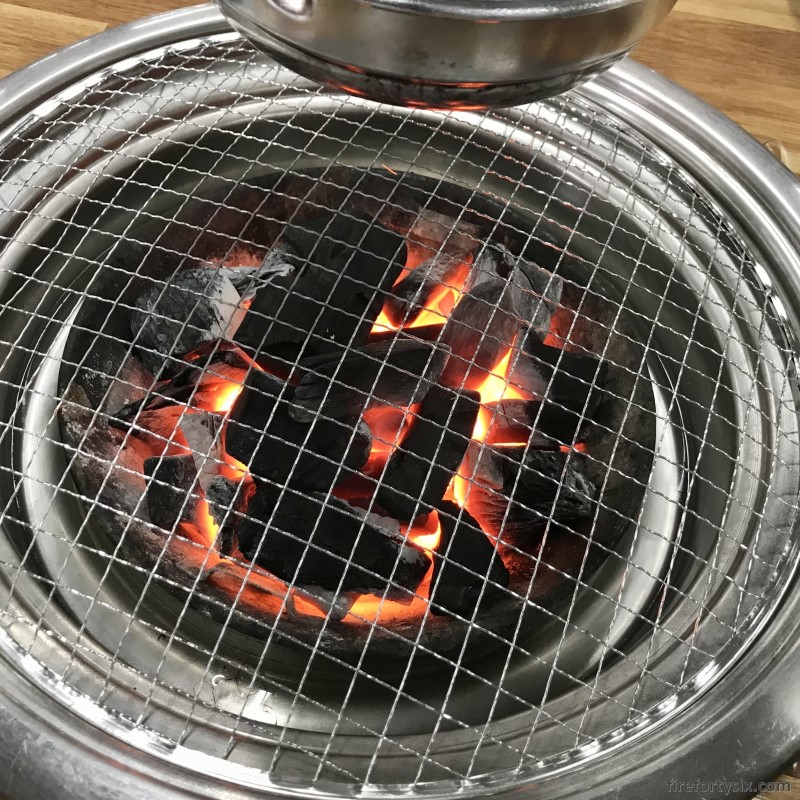

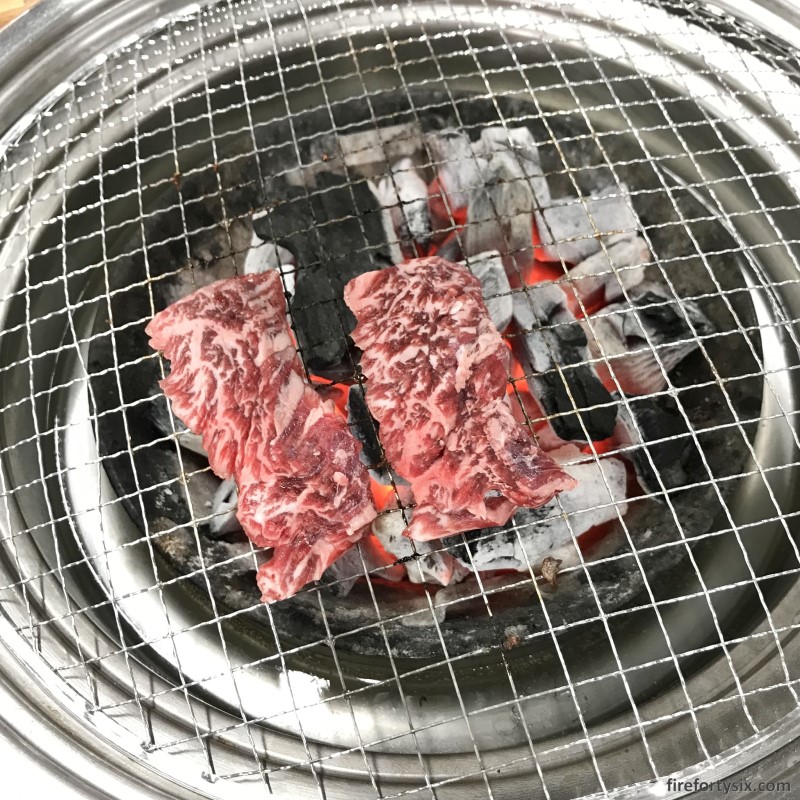
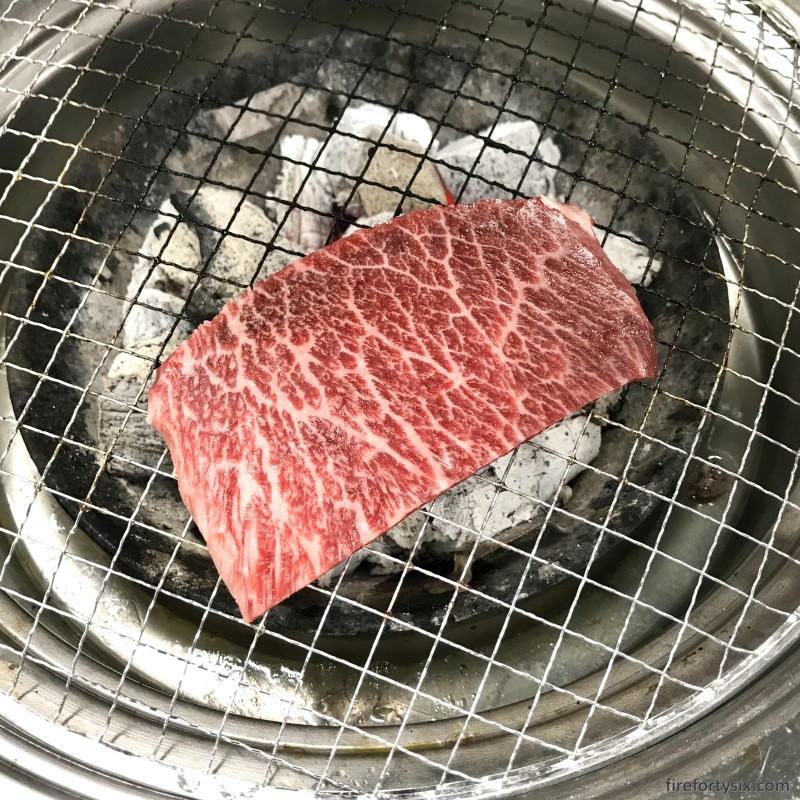
First, we savoured each morsel fresh off the fire, trying it as-is to fully appreciate the natural unadulterated flavour. Then, we added a pinch of salt just to provide a touch of seasoning. And finally, making the quintessential ssam using lettuce and perilla leaves.
Each cut had its own unique taste and texture, but they were all chewy and juicy. Unlike Japanese Wagyu, which is prized for its heavy marbling and melt-in-your-mouth texture, Korean Hanwoo is more robust and more, for lack of a better word, beefy.
If I had to do a blind taste test, I’m quite sure I could tell them apart easily. I can only dream of the day that someone invites me to take that challenge (and pays for it, of course).
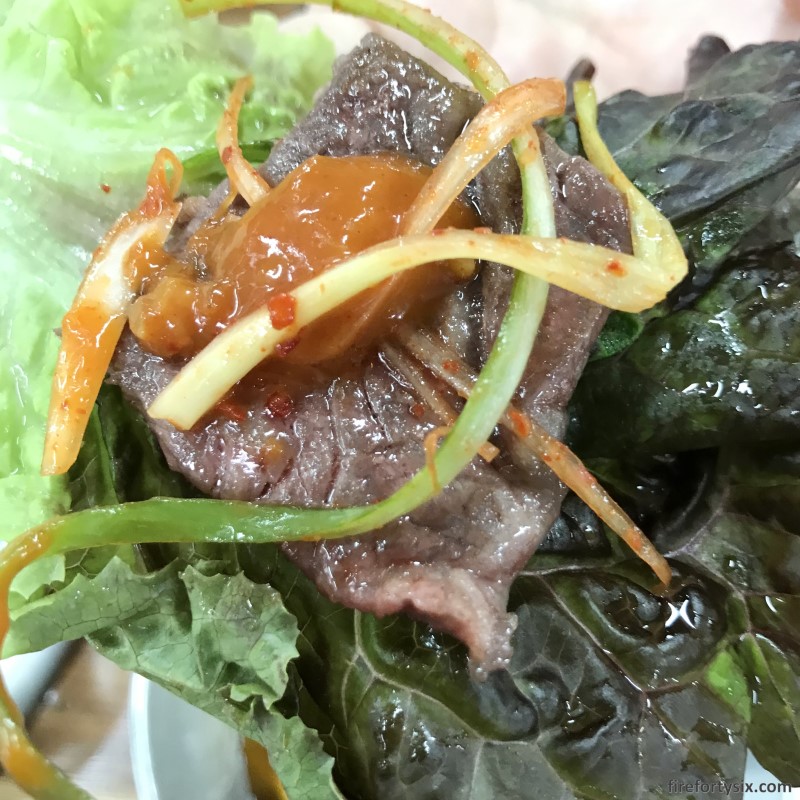
When we were taking a half-time break, unnie came over and placed a piece of aluminum foil on our grill and helped us cook the brisket slices. They were quite nice, but didn’t hold a candle to the thicker cuts.
Using rudimentary hand signs, she also instructed us on how to season the raw beef to make a simple yukhoe. Unlike beef tartare, where the meat is finely minced, these slices were chunky.


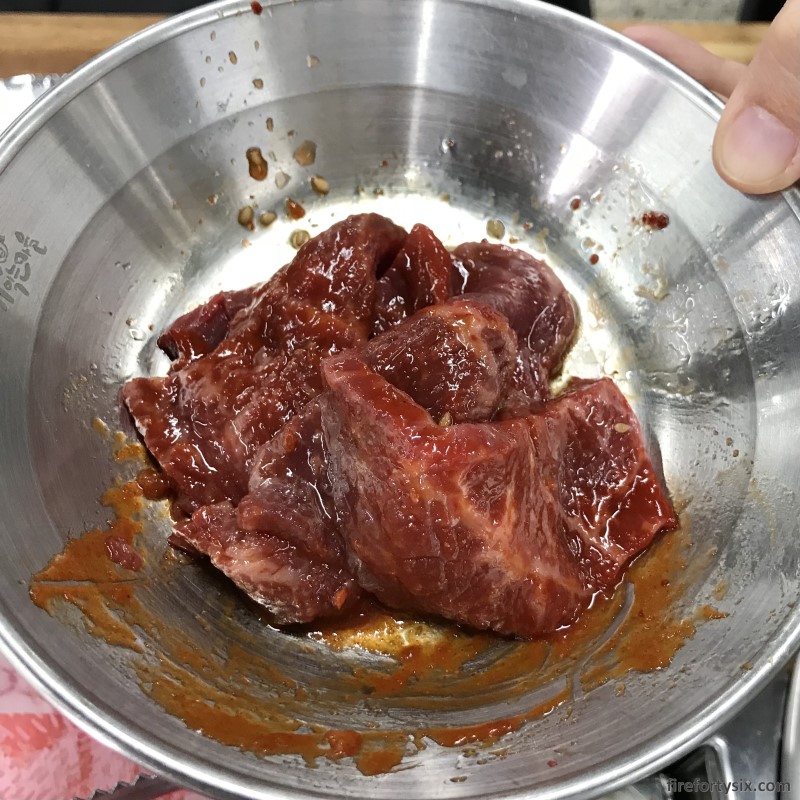

I was apprehensive at first, and thought that they would be hard and stringy. But they turned out to be surprisingly tender and juicy. Wrapping them in kkaennip added a minty and herbal dimension that was refreshing.
We went back to grilling the Hanwoo until they were all gone. For the briefest of moments, the idea of running down to the butcher’s to buy more Hanwoo crossed my mind. But that would have been overkill.
On hindsight, I should have been more greedy and chosen a 600 gram platter instead. Because even though we were quite full by then, I’m sure we could have squeezed in another 42% more meat.
Total Cost
The total bill for our complete Hanwoo K-BBQ experience at Majang Meat Market came up to only ₩89,800 (around S$90):
- ₩71,000 for 422 grams of Grade 1++(9) Hanwoo
- ₩12,000 table charge for 2 persons
- ₩2,000 for a can of Chilsung cider
- ₩4,800 for the return bus trip for 2 persons
Which was a fantastic price for what we had.
In fact, thinking back on all our meals during the ten day trip, both The Wife and I agreed that this was solidly in second place, after the wonderful hanjeongsik at Hangaram. It’s a foregone conclusion that we’ll be back at Majang Meat Market again.
If you’ve been thinking about going there, but have been hesitating because it’s slightly off the beaten path, my advice is to bite the bullet and just go. It truly is an experience not to be missed.
